Ep. 62 – My Love Mix-Up! vol. 1 + Unico: Awakening with Samuel Sattin
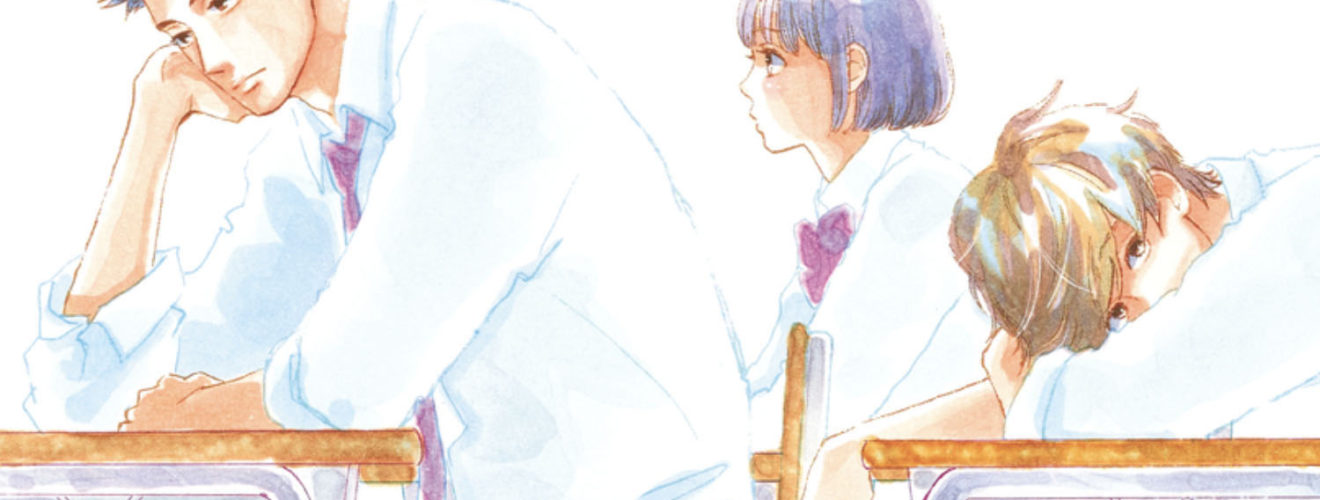
After the spicy romance of Dick Fight Island and Birds of Shangri-La, we veer back into something a bit sweeter and funnier with My Love Mix-Up! But is this shojo manga romantic comedy with a hint of boys love be something that even Chip can enjoy? We shall see!
Then, jump ahead to 51:04 for a special Mangasplaining: Listen to Me! chat with Samuel Sattin, the author/co-creator of Unico: Awakening, a re-imagining of Osamu Tezuka’s Unico with Gurihiru that’s now in the midst of a Kickstarter campaign. Listen in as Christopher and Deb talk Tezuka, comics for kids, manga Kickstarters with Sam, and much more!
Powered by RedCircle
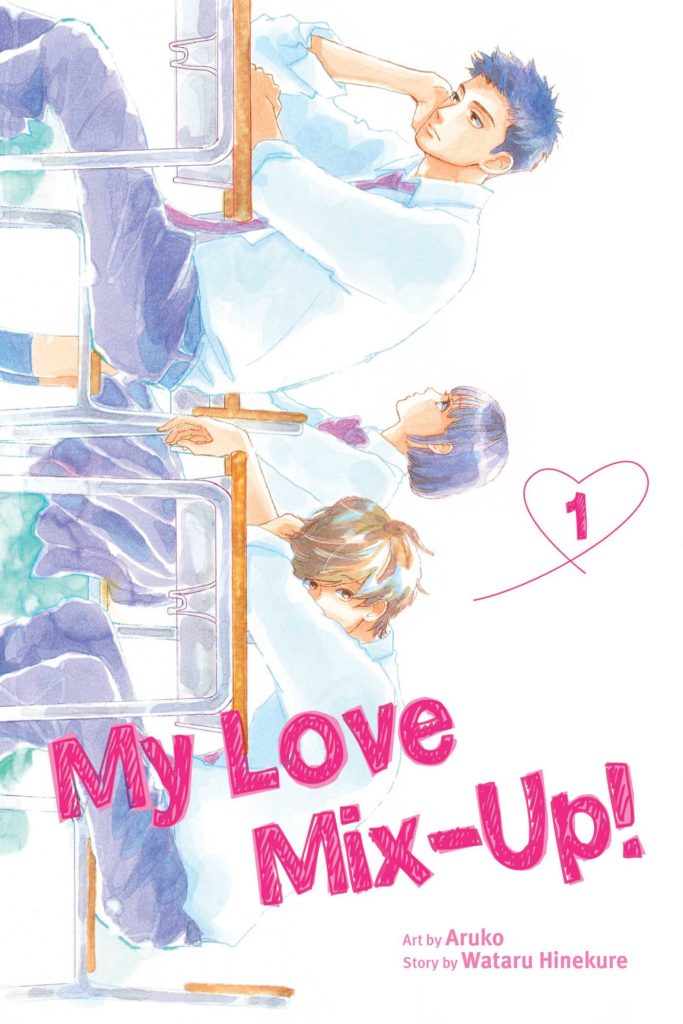
My Love Mix-Up! Vol 1
By Aruko and Wateru Hinekure
Translated and adapted by Jan Cash
Touch-up art and lettering by Inori Fukuda Trant
Design by Yukiko Whitley
Edited by Nancy Thistlewaite
Published by Shojo Beat / VIZ Media (Print & Digital)
Show notes by Christopher Woodrow-Butcher and Deb Aoki. Audio editing by David Brothers.
00:00 In her introduction, Deb mentions that we might never be able to get over the ‘shojo deficit’ on Mangasplaining, due to the fact that, while we’ve been pretty good at picking a fairly balanced set of books by both male and female authors during the podcast (I think we’re close to 50/50 at this point), genre-wise, or audience-wise, we’ve leaned really heavily towards seinen manga, or comics targeted (primarily) for older-male readers.
It kinda makes sense, since we’re picking with Chip in mind, and he is a much older male reader, but ultimately the Japanese genre classifications, both in Japan and here in the West, are exceptionally broken, IMHO, in this, our year of the Lord 2022. Still, I did think it might be interesting to add up the genres so far, and see how (as of this episode) things stacked up.
Mangasplaining “Genre” Tally
Shojo Manga: 5
Shonen Manga: 11
Josei Manga: 5
Seinen Manga: 29
BL Manga: 3
‘Other’ Manga: 6
These are pretty loose numbers, but basically we’ve covered as much seinen manga as we have every other age/genre classification of manga, give or take. Probably because we started the podcast off with AKIRA and that kinda set the tone? So yeah, Deb is right, there’s a huge shojo deficit so far on the podcast, and josei manga too (to an extent). But Season 3 is kicking off in a much more balanced way, as we find our footing, and we talk quite a bit about the nature of picking books for Chip, this episode too.
Which is to say: Thank you for requesting we cover more/different stuff, especially ‘indie’ manga! Thank you also for recommending we cover the same/popular/mainstream stuff too! If you REALLY want to put a suggestion in for something we should read, check out the show notes from our last episode, where we requested reader’s suggestions for first chapters of manga series that we’ll make Chip read for a future episode. (Scroll down to 26:55, the bit just after Food Wars.)
One more thing: Pronunciation Guide!
The name Aoki is pronounced like Deb’s last name, ah-oh-key.
The name Ida is pronounced eee-dah.
The name Aida is pronounced like the English pronunciation of the word Ida, so eye-dah.
Hashimoto is pretty straightforward.
If you don’t know any Japanese, it’ll take a few minutes to pick it up while you’re reading, but that fact that a western reader is likely to pronounce Ida and Aida the same just adds to the fun, IMHO.
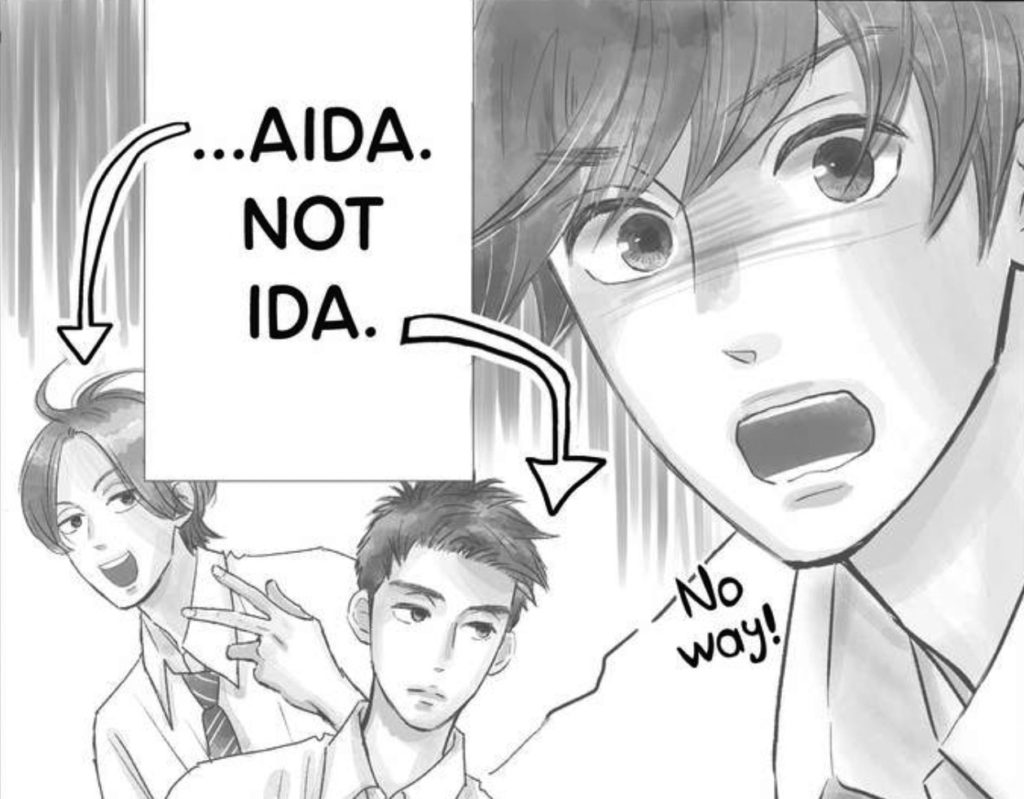
01:00 Here’s how VIZ describes My Love Mix-Up!
Aoki has a crush on Hashimoto, the girl in the seat next to him in class. But he despairs when he borrows her eraser and sees she’s written the name of another boy—Ida—on it. To make matters more confusing, Ida sees Aoki holding that very eraser and thinks Aoki has a crush on him!
Shojo Beat
02:00 David says that this manga excels at a few things, including great facial expressions, and he’s absolutely right. Here’s just some of my favourite facial expressions from the first volume.
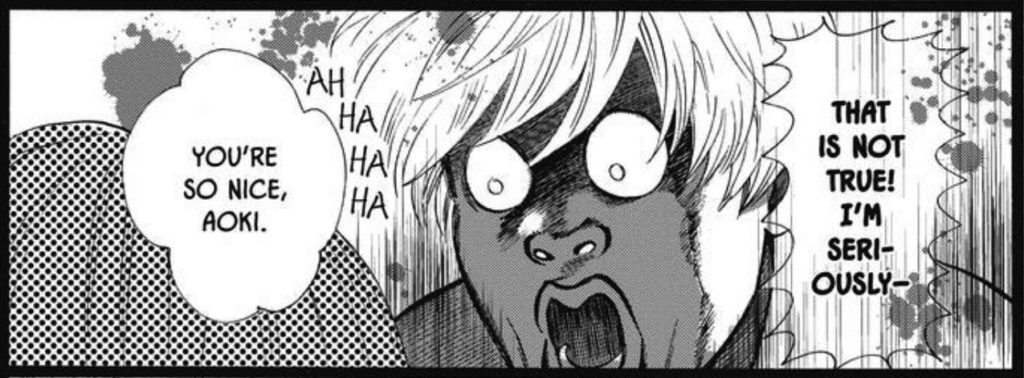
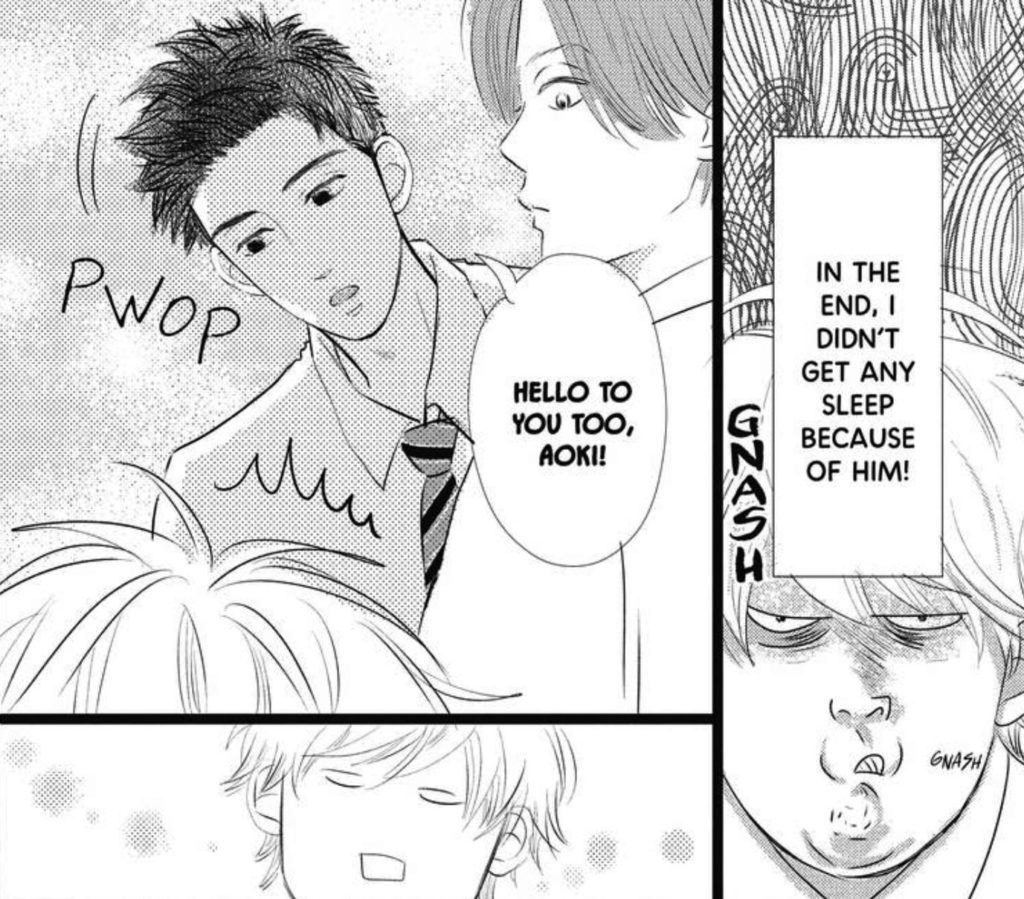
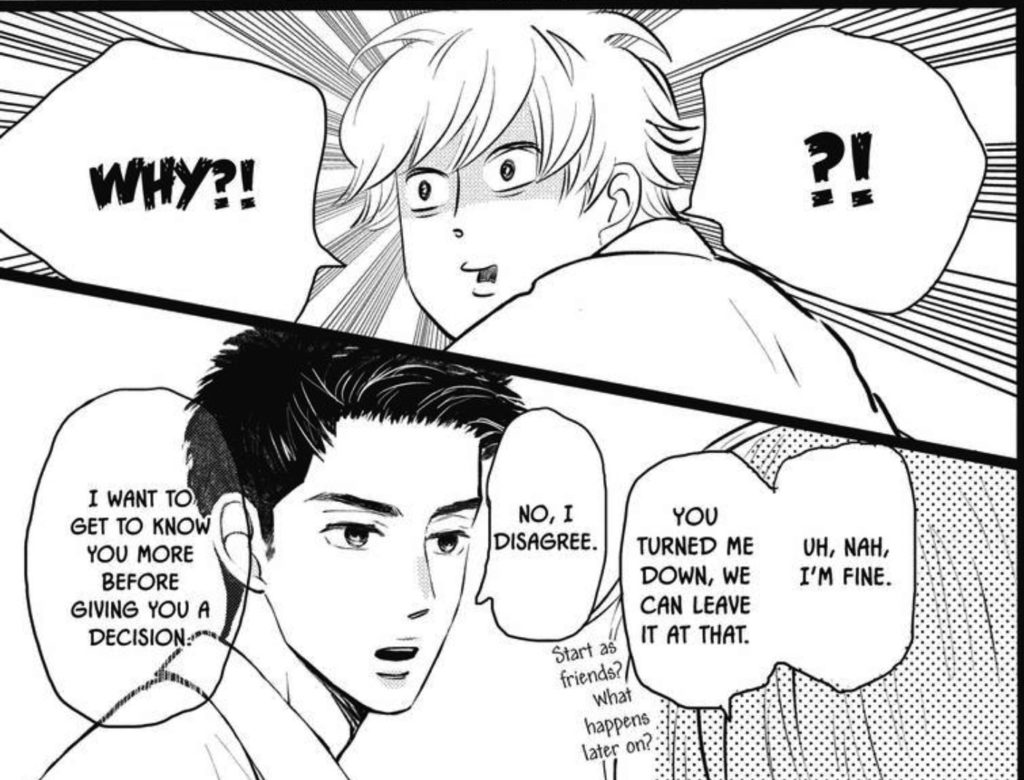
03:55 The first official page of the manga really does let you know what you’re in for, and it sort of sets the tone for just how sweet… and silly… this manga is.
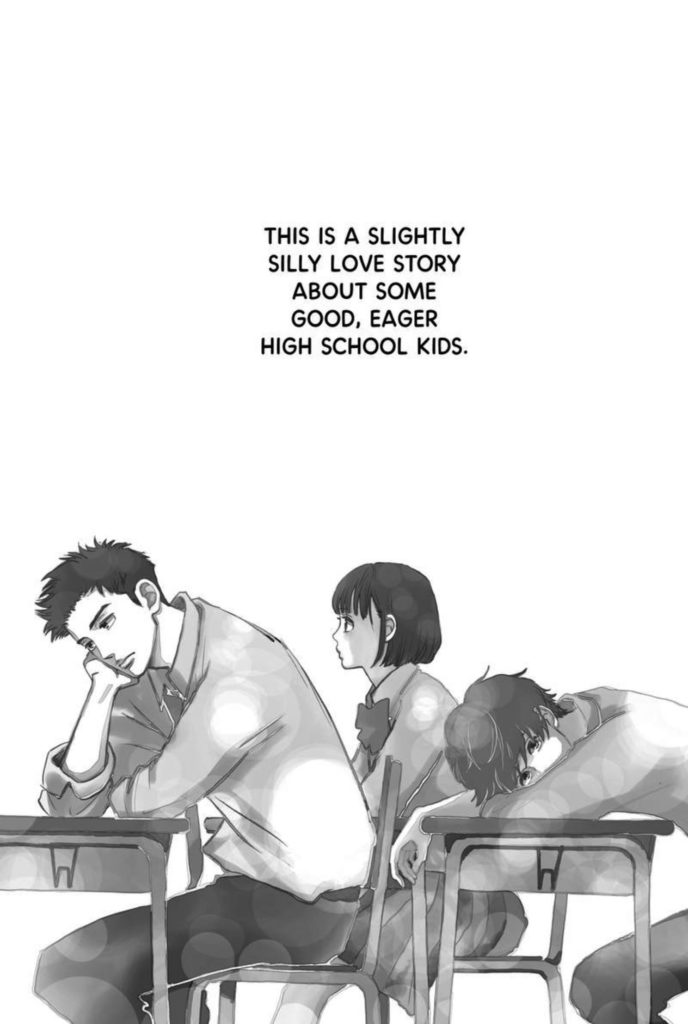
04:00 This is a manga where everyone is constantly talking about how nice everyone else (in their circle) is, both to each other and to strangers. Even their ulterior motives are super sweet and kind. It’s a very soothing manga…


I think Chip is right, introducing the ‘play’ trope out of nowhere in chapter (3?) is, well… it’s bad writing from a distance.

BUT! If you’re a dyed-in-the-wool manga fan, especially a shojo manga fan, then you’ve been waiting for ‘the school play chapter’ since you opened the book – it’s just something that regularly occurs in shojo manga.
Interestingly, all 4 of us forgot to mention that the school-play stuff was a key component to the introduction of the two new weirdly-abusive-to-each-other characters at the end of volume 1 of Monthly Girls’ Nozaki-Kun, which is all about shojo manga! (We counted it as shonen, since it runs in a shonen magazine in Japan… which is another indicator of why genre/age classifications are busted and silly).
06:20 “Why would people write this?” – Chip Zdarsky.

08:05 Okay, yeah, there… aren’t a lot of backgrounds in this one. Again, I didn’t really notice
10:05 I don’t know about you guys, but I’m kind of getting the feeling that Chip did not care for this particular manga.
10:49 [Deb:] Fruits Basket is one of the most popular, most beloved shojo manga series ever published in N. America, but it is, in my humble opinion, NOT something you recommend to a reader who is new to manga.
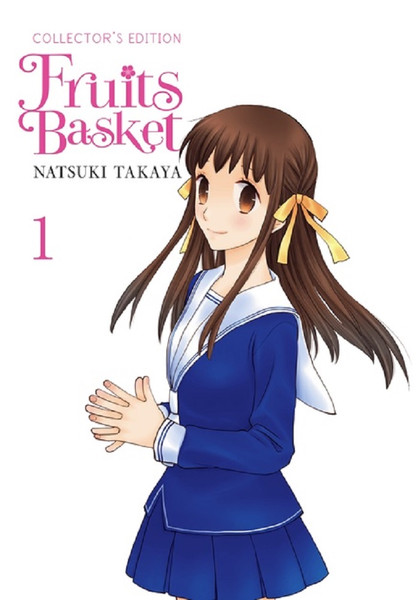
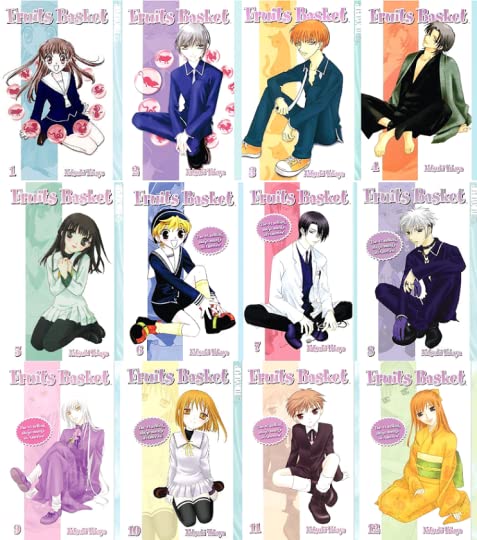
[Deb:] Why, you ask? Well, the whole first few volumes are just silly. A good-natured girl meets two male classmates from a wealthy family who just happen to turn into animals of the zodiac when they’re hugged by members of the opposite sex.
Yes. Right. It’s as silly and far-fetched as it sounds.
But if you stick it out, and read maybe… oh, five or six volumes into this series, Fruits Basket becomes a really resonant, emotional series about a cursed, dysfunctional family, and how they learn to overcome the pain and hurtful patterns of their relationships with their parents, their siblings, their cousins and their significant others. It’s surprisingly deep and lovely story, but it’s NOT a series you can easily recommend to someone who’s new to shojo manga, much less manga in general.
If you want to get a taste of Fruits Basket, check out Yen Press’ 12 “collector’s edition” omnibus volumes that reprint the series that was previously published by TokyoPop.
There’s also a terrific animated adaptation that came out recently (2019-2021) that is much more faithful to Natsuki Takaya’s original manga story that is worth your time to watch (provided you’re maybe on board with some shojo manga silliness at the beginning). Check it out on Funimation or Crunchyroll.
14:20 Not every manga… is a manga… for people who haven’t read much manga before.
15:00 Okay, even more to the point of the lack of backgrounds, this does have a lack of backgrounds (and good use of whitespace IMO), but as Deb points out it has a LOT of shojo backgrounds. In particular, Ida as Prince Charming, surrounded by blooming roses, on page 117, which really drives the point home.
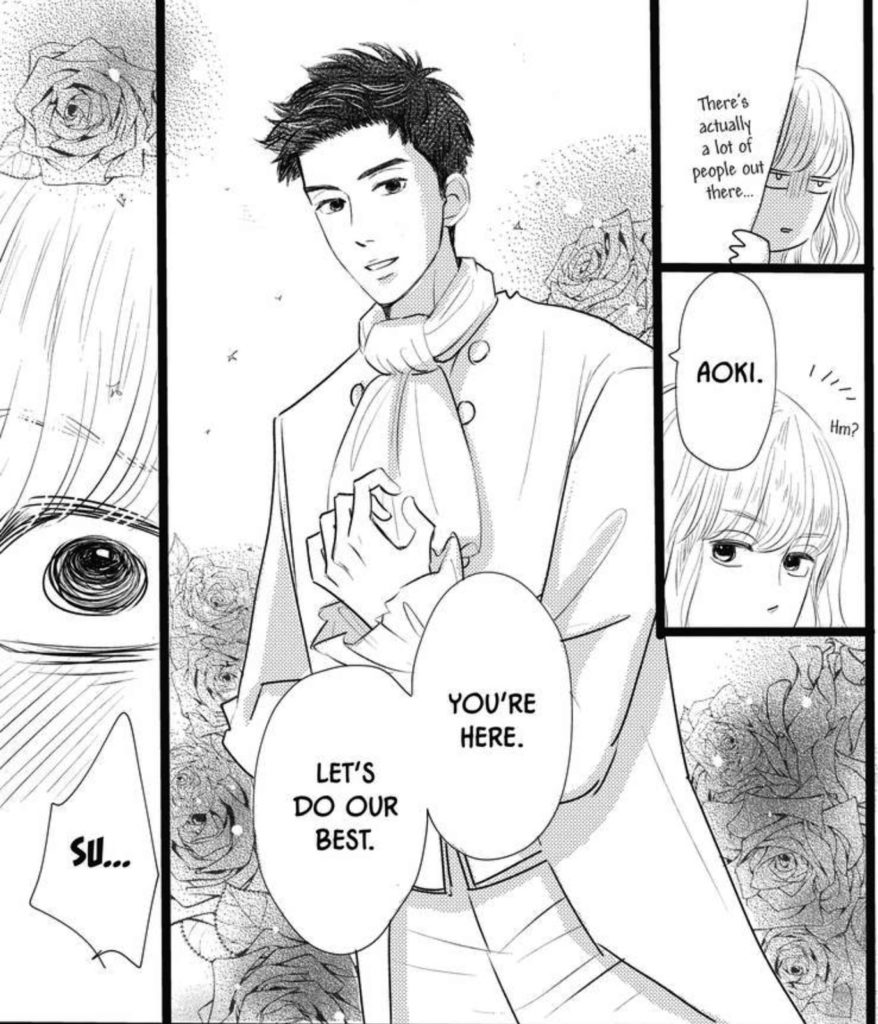
16:00 “Since this is my first crush, I want to cherish it.”
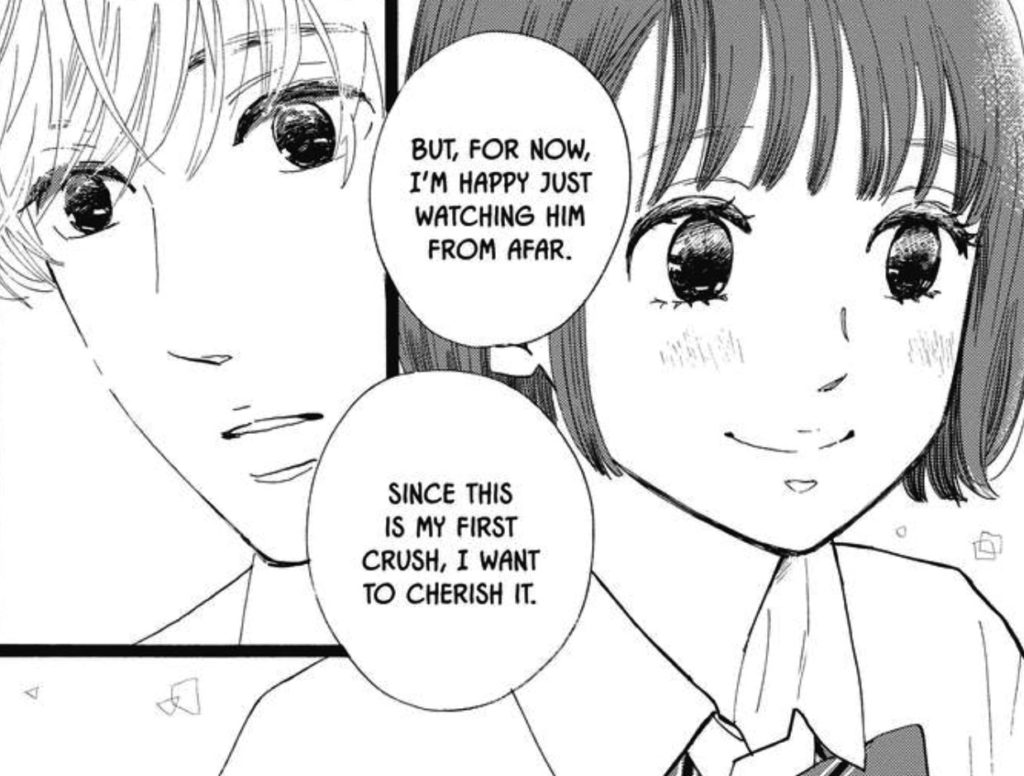
Okay, we gotta dig in here.
1. Yeah no one talks like that,
2. …except in shojo manga, and the people, especially young women, who read shojo manga, talk exactly like this because it reinforces itself. This is a story that, much like Paradise Kiss, features the characters reading the manga magazine that they’re serialized in to try and understand some of the nuance of what’s going on. It’s absolutely self-referential, it’s comics for fans of these types of comics.

Which isn’t to say that you can’t balk at that, as Chip does here, if it doesn’t hold up to your desires for story or your expectations for the work. You can take a pass, and no one needs to come for anyone in comment sections with knives out. Probably.
Also: I really did like Gotham Central and Brubaker’s a good dude. It seems to be largely OOP at the moment, but maybe your local comic shop will have a copy on the shelf, it came out in 2 or 3 different versions.
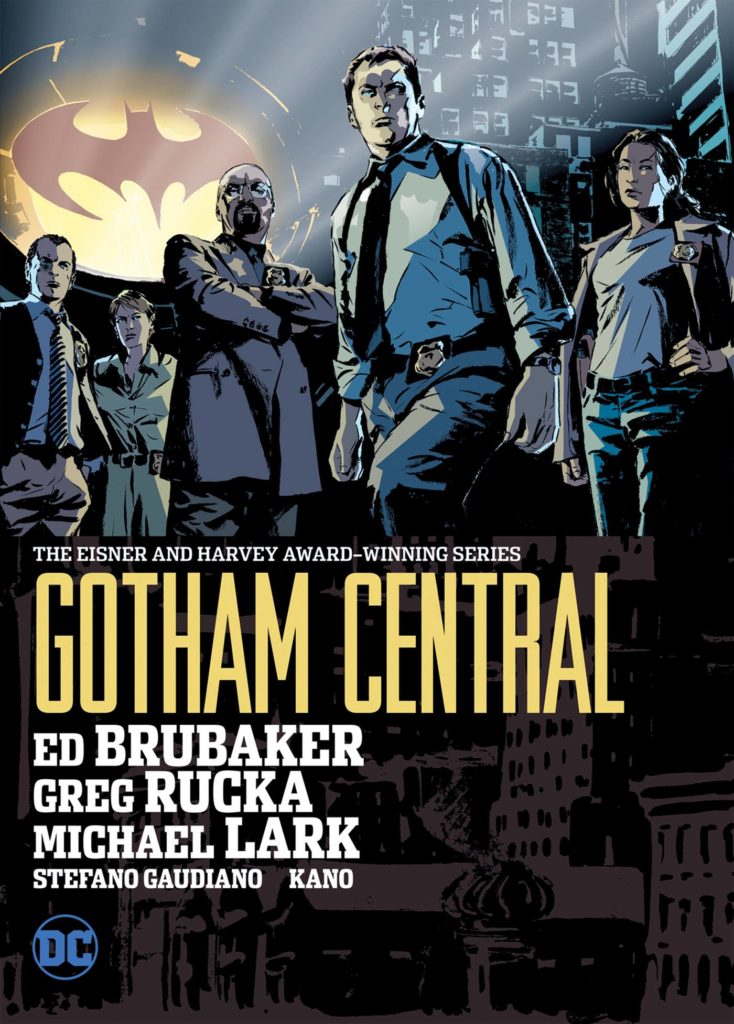
16:45 Speaking of little asides: I didn’t mention it at the time, but I really like the font they’re using for the narration boxes. Very cool. I like the Anime Ace font just fine, but it’s nice to see them… Mix It Up… a little. 😉
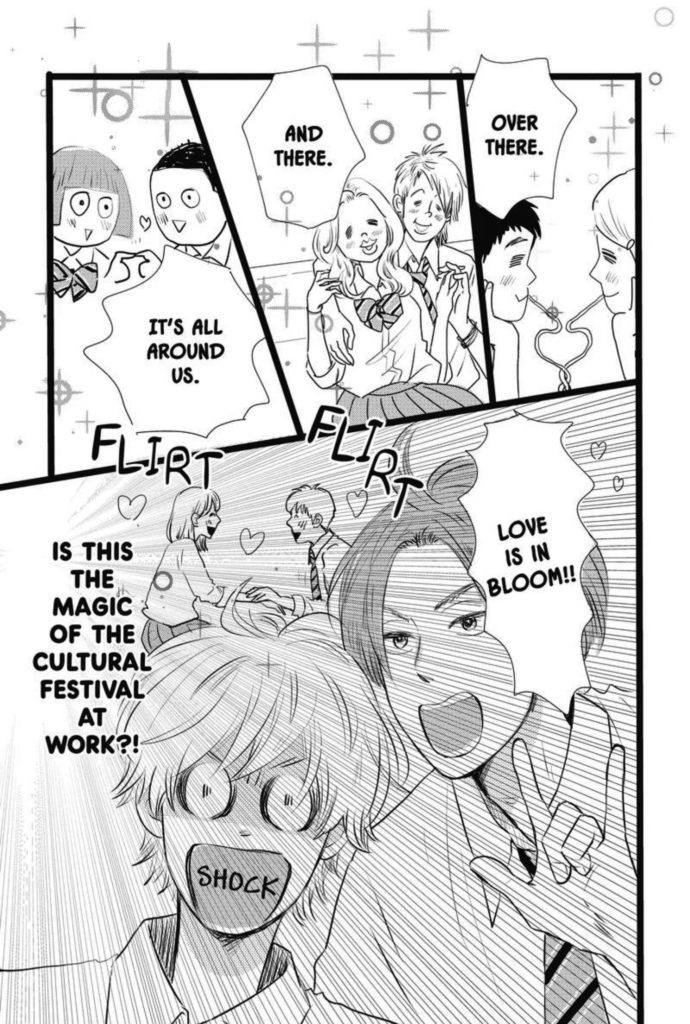
IS THIS THE MAGIC OF THE CULTURAL FESTIVAL AT WORK! Haha, oh man.
Also as an aside, I love how the artist basically doesn’t give a dang about the characters who don’t get lines. Like they’re drawn with the hash-mark eyes to start, but by that third panel up top they’re basically muppets, reinforcing just whose story it is. Love that panel.
17:00 I think Deb, David and I all mentioned the artist’s previous series, Ore Monogatari! / My Love Story!!, both when this title was chosen, and now during the episode. We got asked quite a bit why we didn’t pick that series instead, and there’s a couple reasons.
1. Deb really dug this one and wanted to share it! Lol.
1a. [Deb:] Also, I thought picking My Love Mix-Up! would be a funny segue from all the saucier BL manga we just talked about!
2. There’s a real, tangible benefit, especially to more marginalized genres like shojo and alternative comics, to picking a new work. Sales on early volumes are the greatest indicators of success for a manga, besides getting an anime adaptation. We’re picking this one because it’s serializing RIGHT NOW, and so it’ll probably be in print, and buying copies of volume 1, 2, and even 3 will help increase the chances it stays healthy and does well… Which means getting more shojo manga into the market!
It doesn’t mean we’re only going to pick ‘new’ manga, or only pick manga for sales/support reasons… Hell, my next pick (recording this week) is Cross Game by Mitsuru Adachi, but we’re out here doing the podcast because we love manga, and want to support the authors and the folks who bring it to North America whenever possible, and doing that for more recent works really helps move the needle in a positive way. 🙂
Which isn’t to say that you shouldn’t go read My Love Story!! as well, it’s amazing. It has some of the best shojo manga covers of ALL TIME. But also: We’re doing an episode on the good new (gay) one right now, maybe if y’all respond well (or beg for it in the comments) we’ll go back and do My Love Story!! at some point, too! 😀
19:50 So yeah, as I said above, this is a self-referential shojo manga. In addition to the image up top, the author afterword also has a bunch of people reading the magazine, in awe of what you just read:
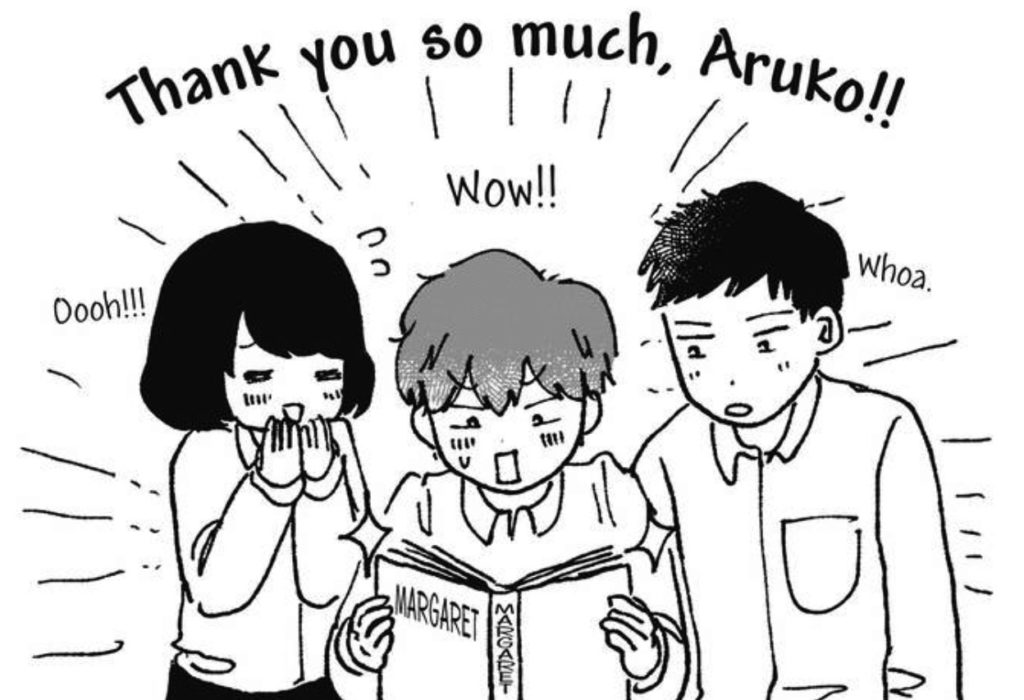
Also the “power of the cultural festival” bit is pretty… shojo manga as well. This is a book that’s VERY aware of genre conventions, and is definitely playing with them more than a little.
20:00 Sometimes David just slips things into the edit so that we can all be surprised when we listen to the episode, and that’s just great. 😉 Here’s the video if you wanna go see the whole scene for yourself.
21:49 One of the things I like best about the podcast is that we’re all different readers, and different stuff stands out to all of us. Honestly, none of the stuff Chip called out, even the “cherish my first love” quote, really made much of a negative impression on me when I was reading the book. That cuts both ways though, as Deb has called out an amazing, subtle little background joke that I ALSO completely missed. The little cut-away to what the character Aida thinks of his friend Aoki, just where he ranks in the hierarchy of random things he thinks is interesting, is as hysterical as Deb makes it out to be.

On second (and third) read-through, I noticed a ton more jokes too, and it was delightful. This one about Ida worrying that Aoki will change himself to fit what Ida likes, I don’t know how I missed this.

24:54: Oh, Chris liked the one with the one hero who doesn’t look like a shojo hero? How Surprising.
[Deb:] There’s also a live-action adaptation of My Love Story!! that had a promo poster that directly referenced the manga cover artwork.
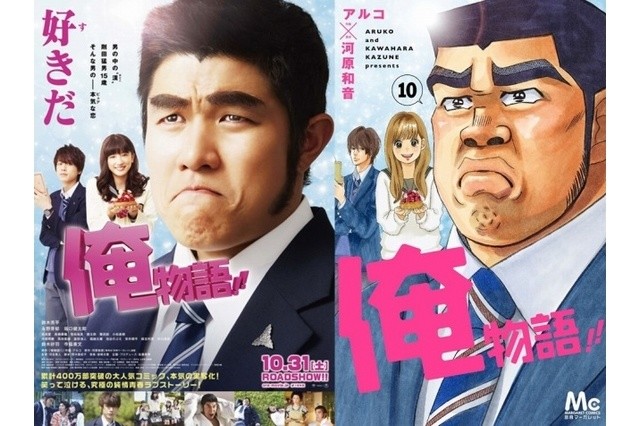
[Deb:] Speaking of live-action adaptations, there is a live-action TV show version of My Love Mix-up! is now airing on Rakuten-Viki.
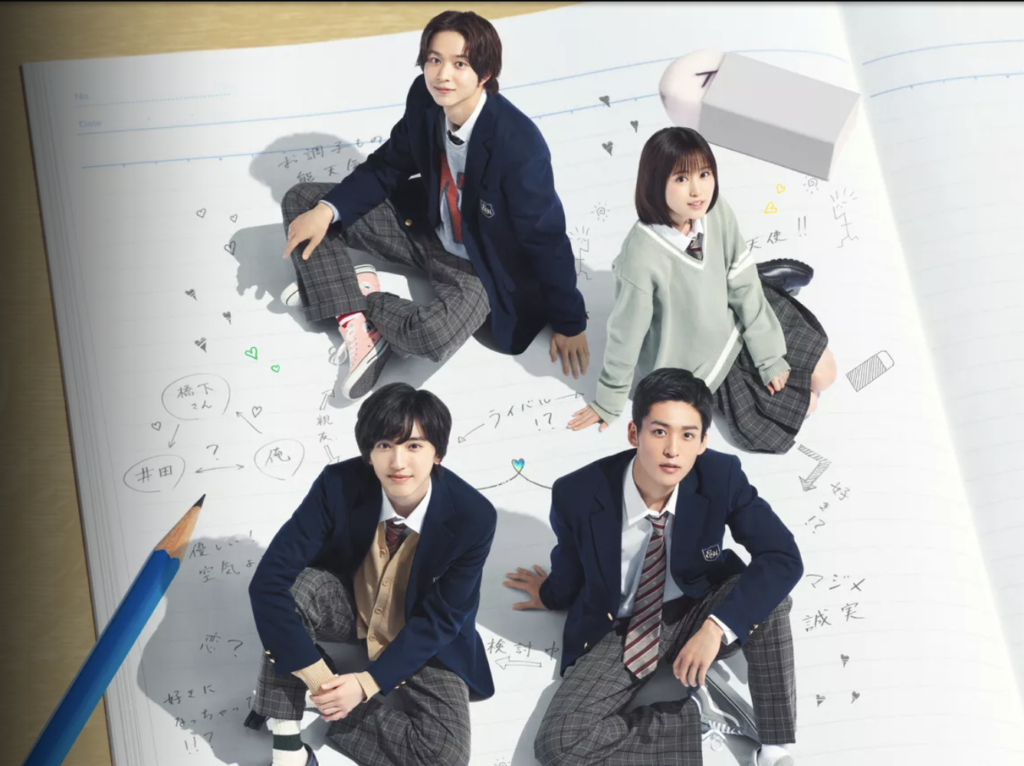
25:20 Christopher shouts out the shojo manga Prince Freya, from VIZ. A simple village girl must take the place of a powerful warrior prince to prevent chaos from descending on her kingdom. Gender-swapping reverse-harem with beautiful art shojo manga… Maybe it’s FOR YOU?
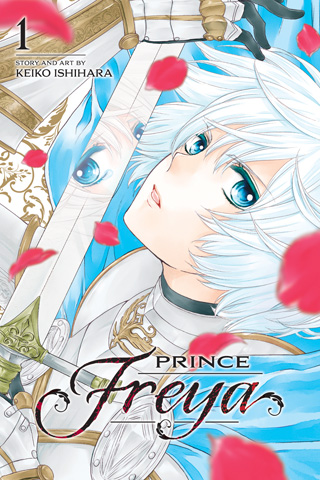
27:30 Hashimoto is strong like a gorilla!
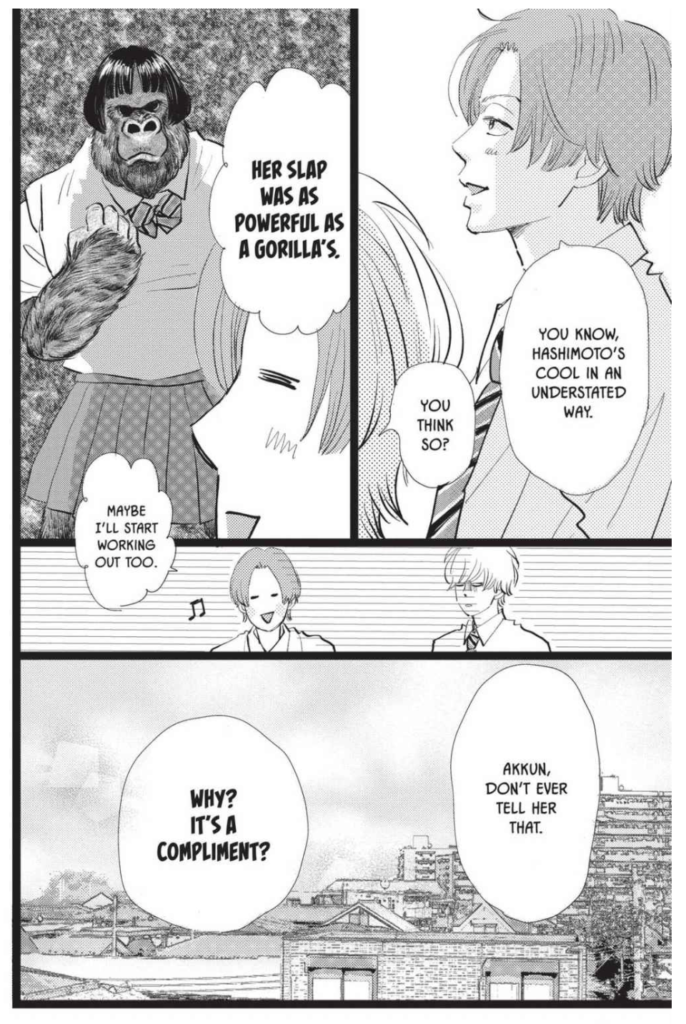
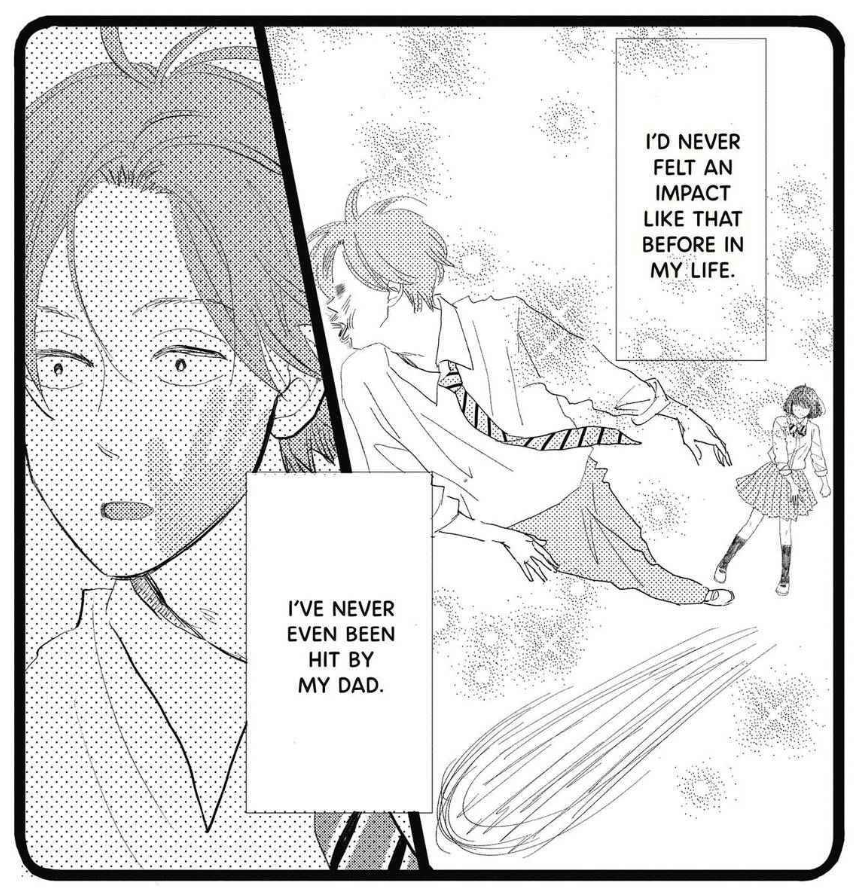
[Deb:] Yeah, Aida… I wouldn’t tell Hashimoto this particular… compliment.
28:30 Yeah, the digitalness of this feels a bit… dated? Or like it will be dated? Looking back at My Love Story!!, Aruko’s work did have some ‘digital’ feelings to it, but it seems to be really ramped-up in this series. Compare these two images that we mention, the same image from the cover and the title page, and you can see how far she’s pushing the digital work.
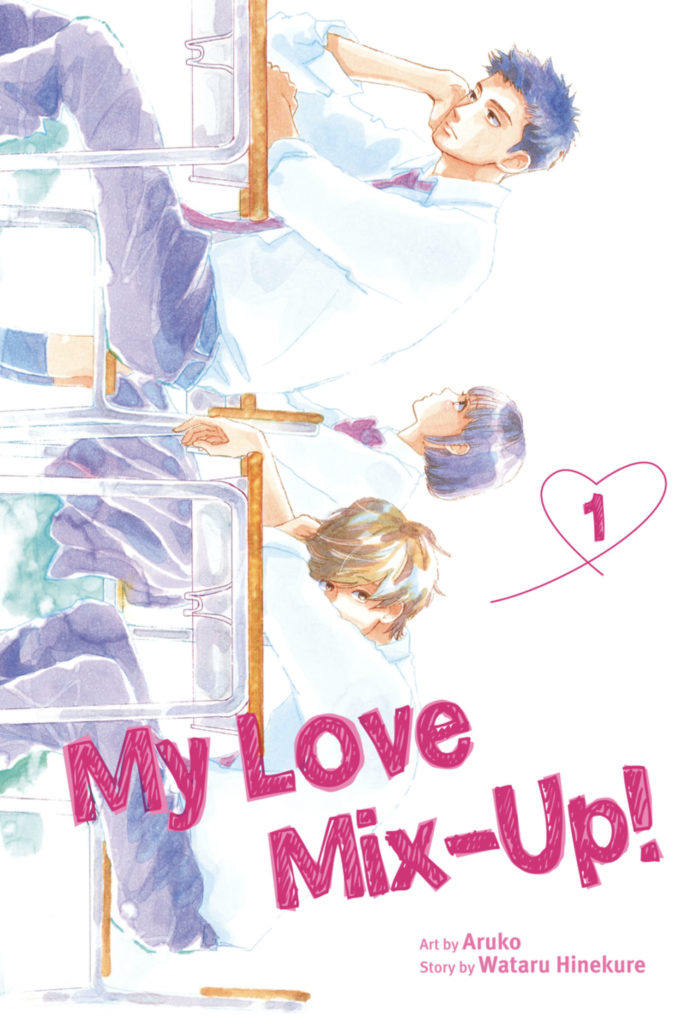
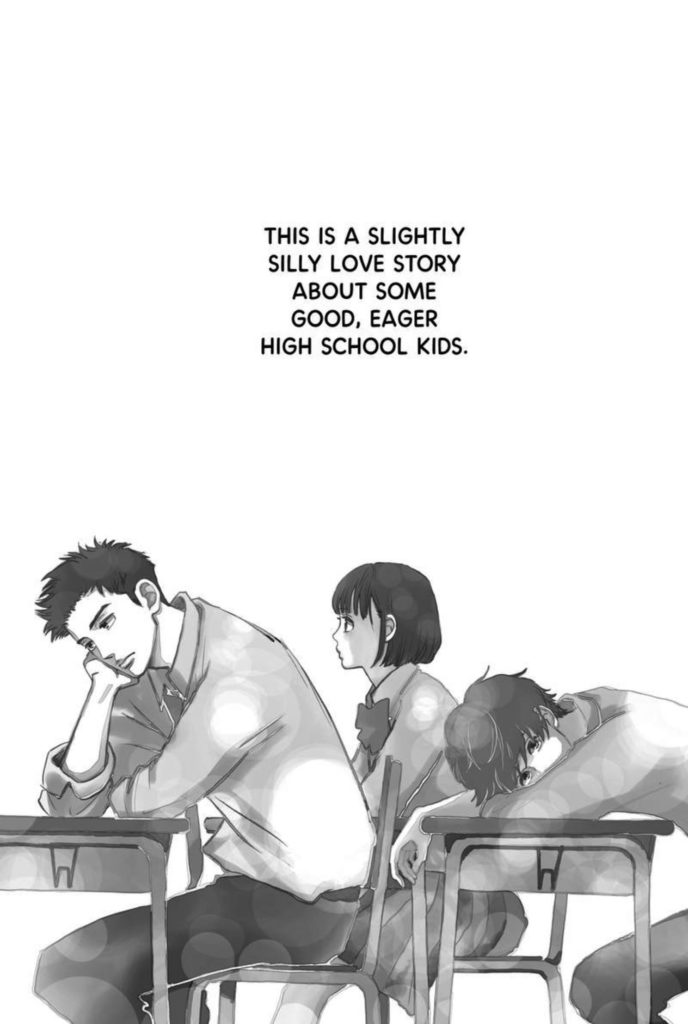
On re-reading this one a third time, you can see the approach to screentone and digital additions change pretty dramatically. I can’t tell if it’s Aruko (or her assistant) finding their feet, or if there’s a conscious decision to try and push things artistically. I think it’s the latter, because you can see… well… let me just show you. Here’s the first 3 chapter spreads.
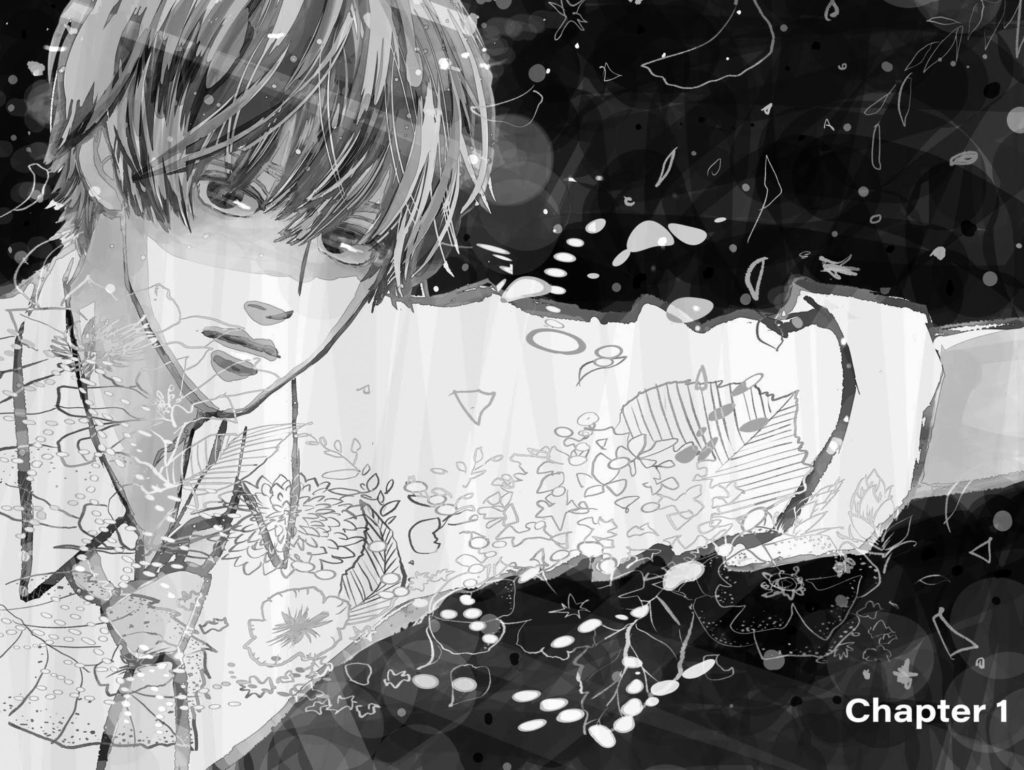
Chapter 1 is wild. Full on digital illustration, overlapping textures, a knock-out texture overlaid over the whole thing, it’s really busy and a lot. And like… I can’t help but think that this was PROBABLY printed in colour in the original, and so it’s suffering even further for being printed in black and white.
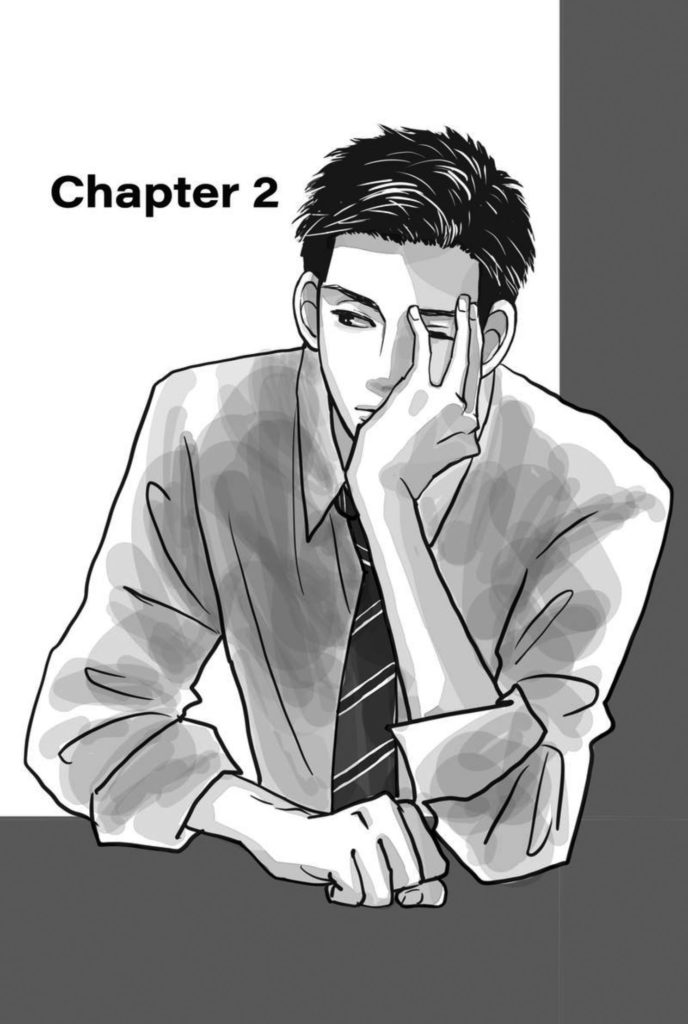
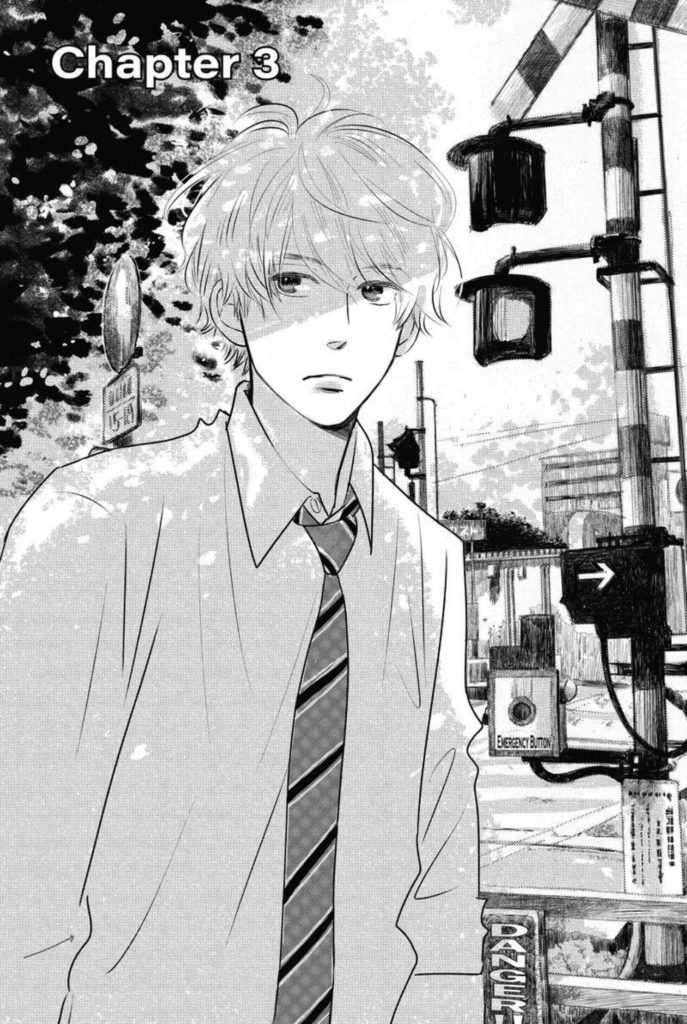
There you go to chapter 2, and you can see (as David mentions in a few minutes) a completely different line weight, colouring with a very digital brush, it’s all very… like, surprising I guess? It’s not unskilled though, you look at little things like the blob of shadow on the hand on Ida’s face, and that’s a nice bit of skill. But those first two compared to the chapter title page for Chapter 3? WOW. Something happened. It’s still clearly digital, with the speckled shading on Aoki’s shoulders, sunlight streaming through trees. And the backgrounds! Clearly a paint-over from a photo, but really well integrated, it’s super great. But such a change.
Let’s see where it goes from here?
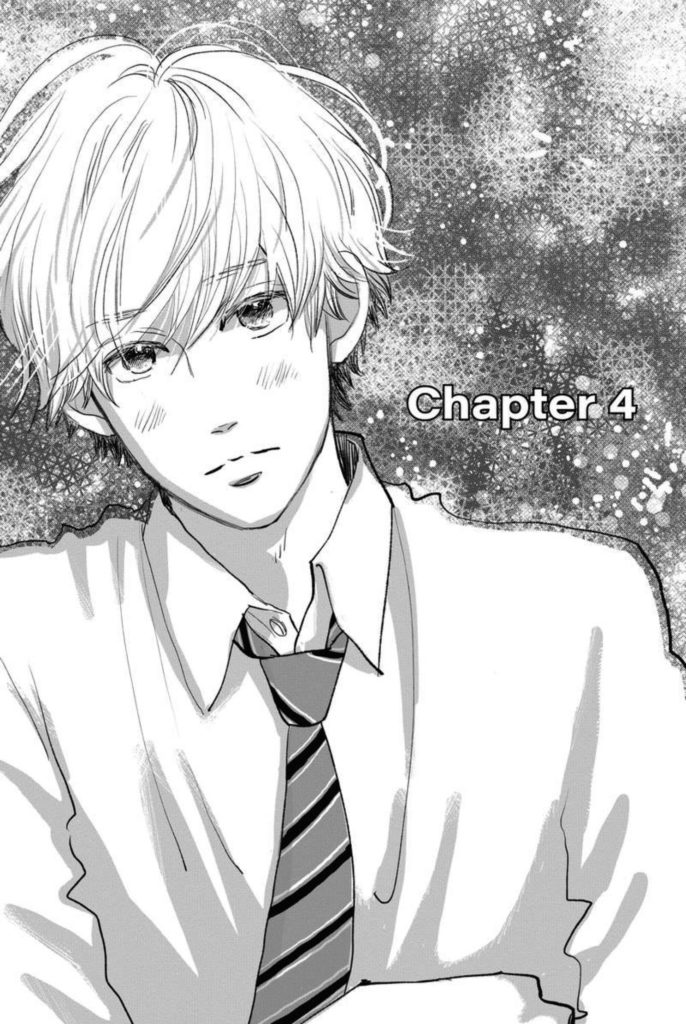
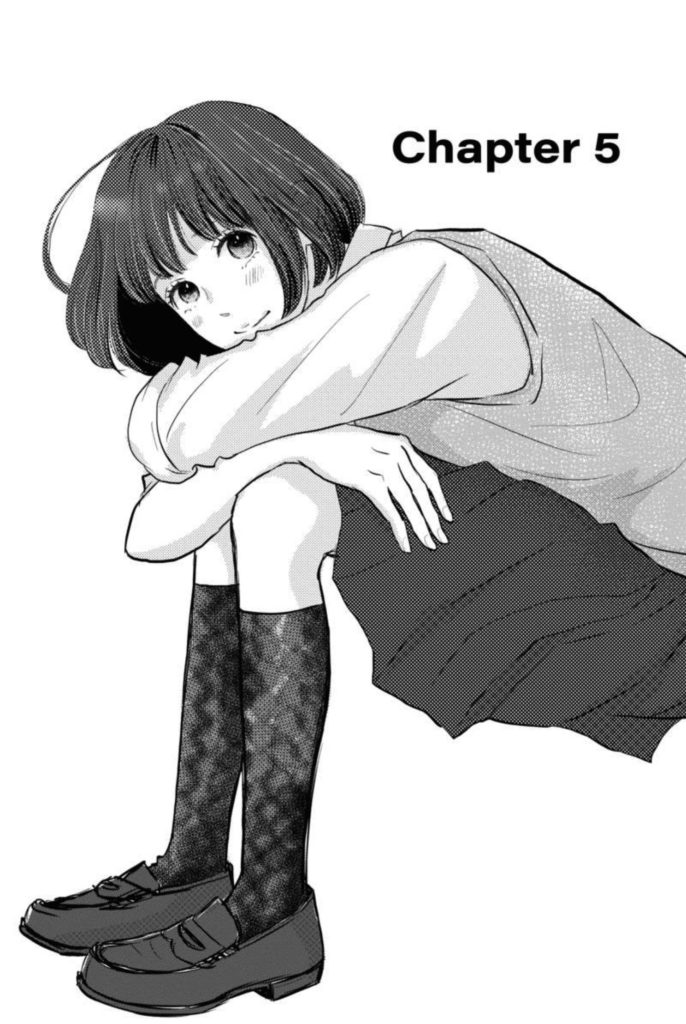
Chapter 4 is a smoother anime style of shading, with a LOT of attention paid to the hair… and just a dog’s breakfast of a background on that one. Lol. But then Chapter 5 is pretty similar to Chapter 4, with even more attention paid to the hair, and a realistic pattern added to the socks. Looking from Chapter 1 to 5 you can see a pretty clear progression. It’s really neat!
I don’t usually do this sort of stuff in the notes, but I thought it was interesting. 🙂
30:20 Okay, ONE MORE hilarious face. In this panel, because of the way it’s set-up, you can’t see Aoki’s horrifying/hilarious reaction face, so the artist just pops it on the back of his head… which makes it even better!

31:17 There’s a lot of screentone going on in this double-page spread. Does it work? I honestly don’t think it works.
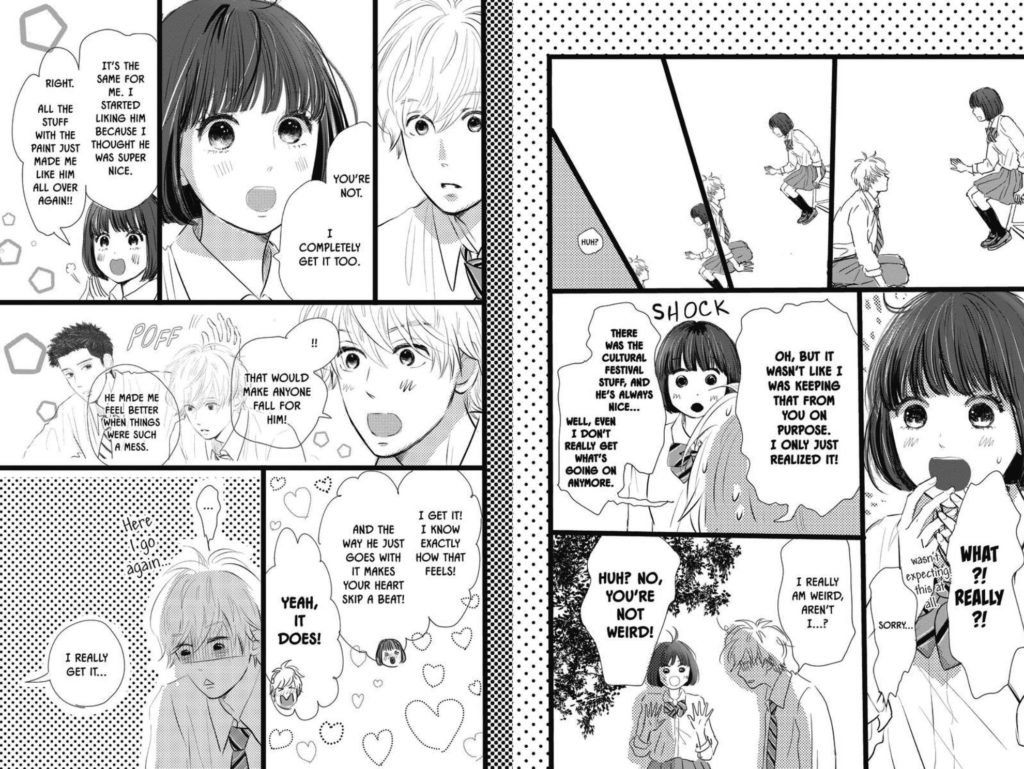
Great scene though!
32:50 Speaking of digital rendering, I think I covered it on the podcast, but this image of Hashimoto’s hair from page 169 is a good example of just how… digital… the screen toning is in this manga. It’s also interesting that this panel goes from more flat screentones to a level of detail and depth usually reserved for that chapter-page-type-illustration.
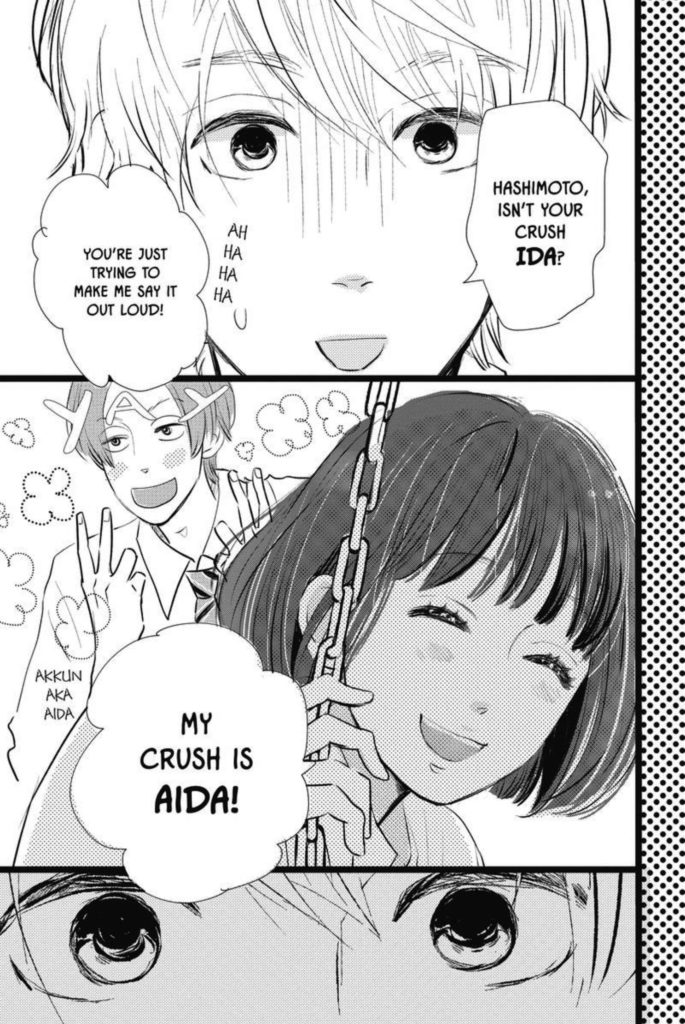
34:40 Deb references BL manga like I Cannot Reach You, by Mika, published in English by Yen Press, and Sasaki and Miyano by Sho Harusono, also published by Yen Press. Two high school BL manga that have a real will-they/won’t-they slow burn vibe, that you might dig if you enjoyed the BL aspects of this manga.
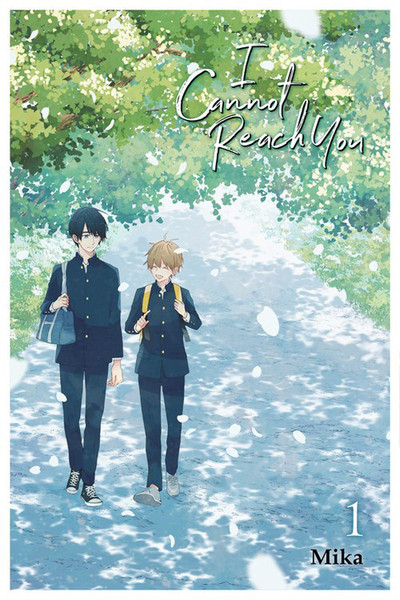
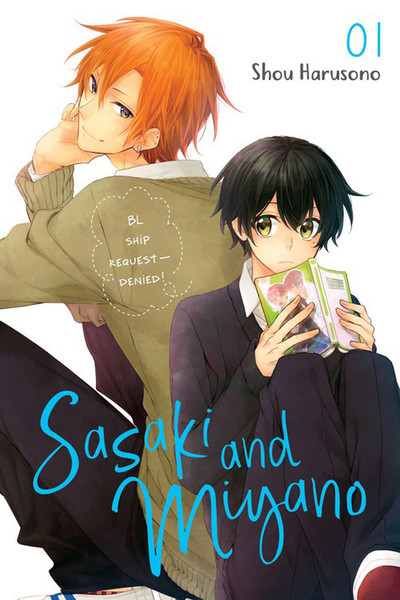
35:00 [Deb:] For you young ‘uns, the “You got my chocolate in my peanut butter!” quote is a reference to an old Reeses Peanut Butter Cup commercial from the 1970s.
39:50 David was a Spider-Man kid, and so his ‘window’ into adult life through comics was Peter Parker and Mary Jane being married. I was more of an X-Men kid, so mine was… I guess Scott and Jean? And Madelyne and Alex? Which is truly insane. Explains a lot.
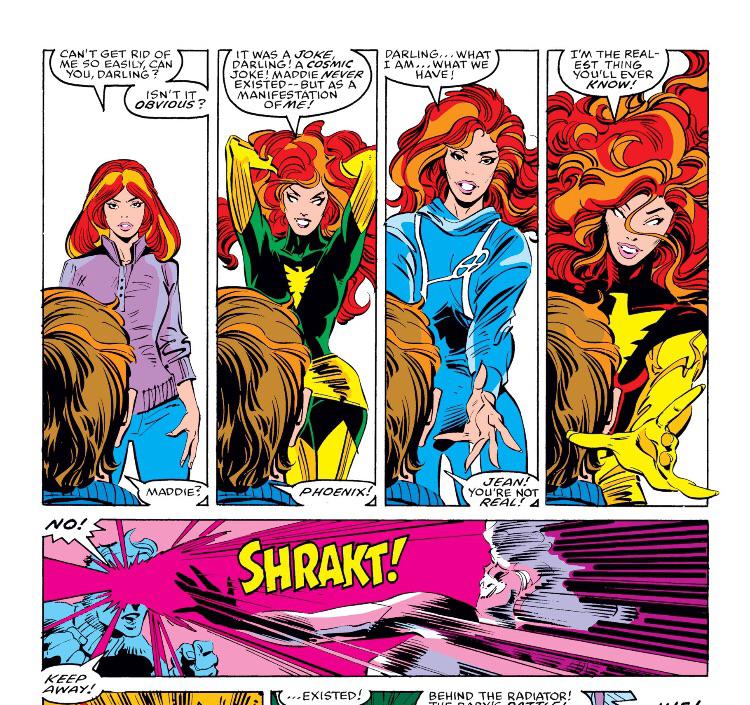
41:30 The character for love and weird is the same…

42:30 David is gently, gently referencing the author ONE, who has drawn the comic Mob Psycho 100. His art… well it looks like a writer drawing a book, and it doesn’t look a lot like what we think of ‘professional’ comics. It’s naive and kinda great. I think we’ll have to do this at one point, because Chip won’t have any idea what hit him.
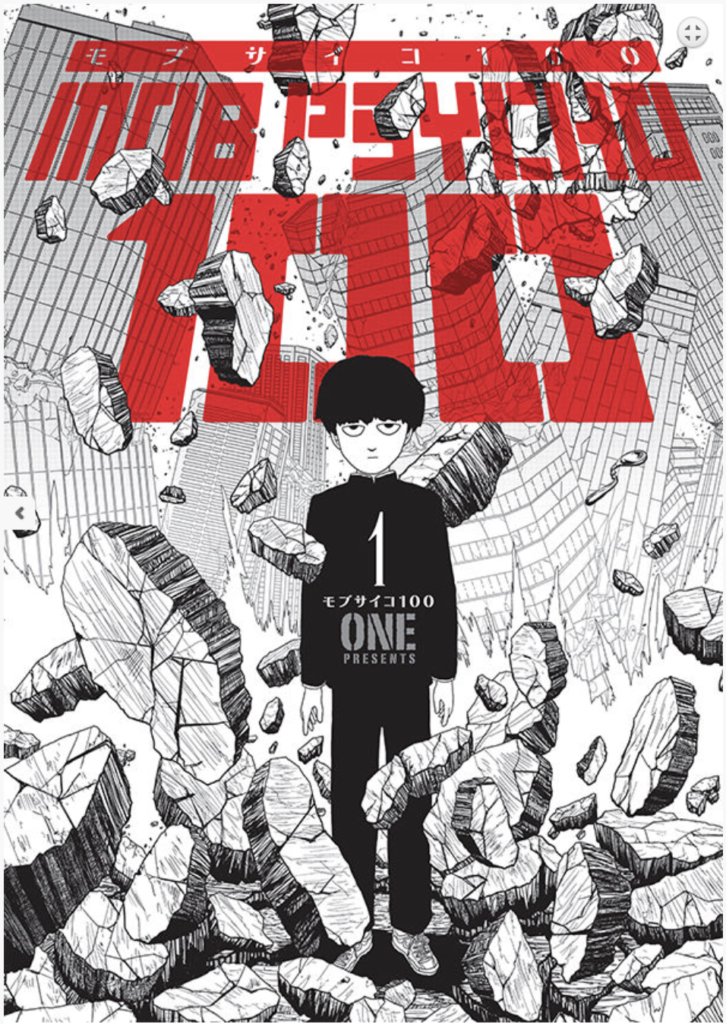
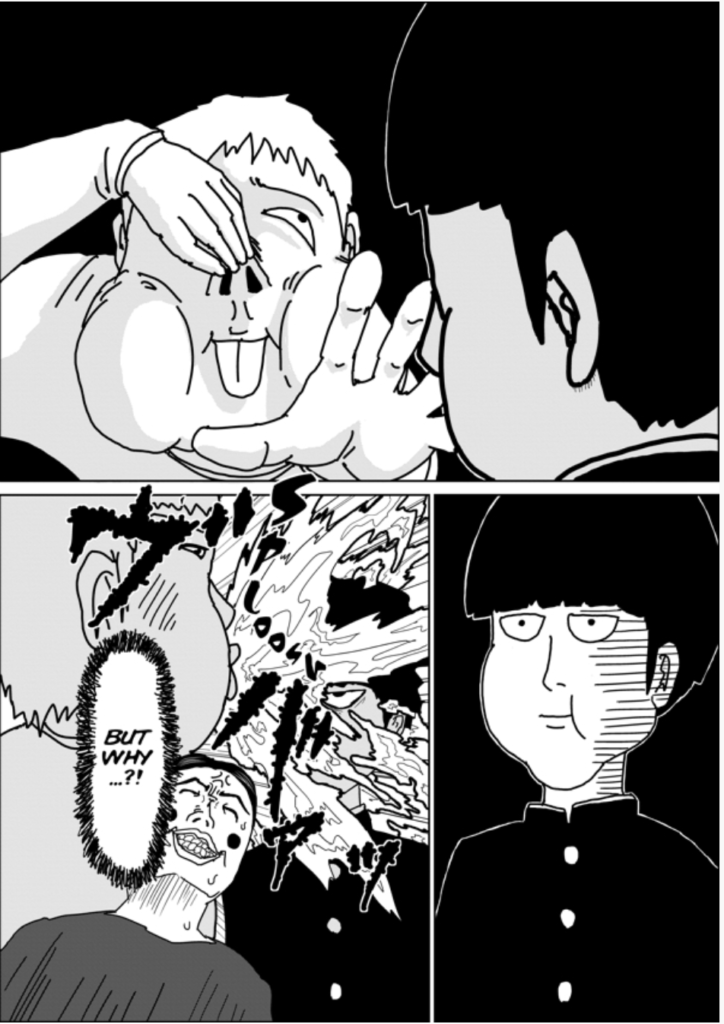
[Deb:] You too can check out the madness of Mob Psycho 100 by reading the manga (which Dark Horse is publishing, or watching the anime, which is streaming on Crunchyroll. Incidentally, ONE is also the author/creator of One-Punch Man, a manga series we will surely, someday talk about on Mangasplaining.
43:00 Deb mentions the shojo manga High School Debut by Kazune Kawahara and also published by Shojo Beat/VIZ. She liked this tomboy shojo manga a bunch.
This also introduces a REALLY interesting notion though, because Kazune Kawahara is the writer/artist of High School Debut, but ‘only’ the writer of My Love Story!!, which she partnered with Aruko. Off-air, David, Deb and I were talking about creators being writer-artist teams in Japan, and whether that happened more or less often in shojo manga than in other genres. I think it’s really interesting, because it brings in all kinds of ideas about the editorial system in Japan, about partnerships, the difficulty of drawing regular manga, it’s pretty cool. I think we settled on “we need to get a shojo expert on the podcast” for a “Listen to Me!” segment. Maybe in the future?
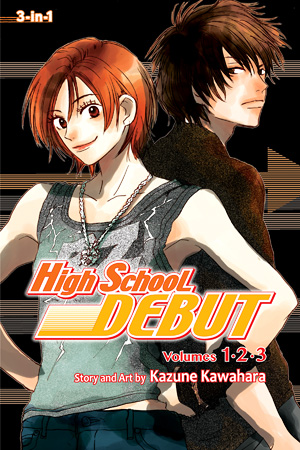
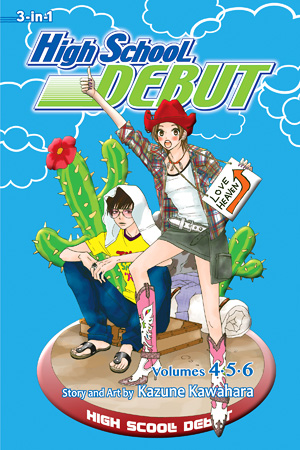
[Deb:] High School Debut has some of the good-natured, odd-couple romantic comedy we see in My Love Story!! and it’s just charming as all heck. It’s available now as five volumes of 3-in-1 omnibus editions from Shojo Beat / VIZ Media, so check it out if you can!
43:50 Like we said, having a book that you can actually legally buy is a big part of the podcast.
49:00 We talked a whole bunch, didn’t we?

Anyway, I just read volume 2, and it’s great, and has stuff that I think Chip would find really satisfying and also super hate, and that’s kinda perfect too. Once this is uploaded I’m gonna go settle in with volume 3. And that’s this week on MANGASPLAINING!
51:04 It’s time for THE BREAK!!
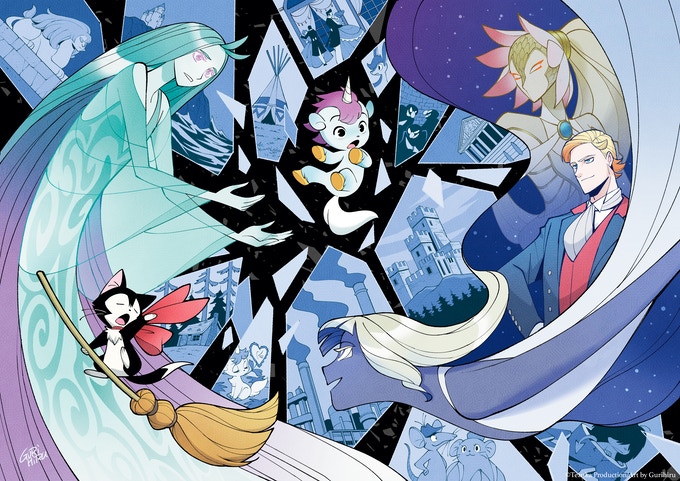
Mangasplaining: Listen To Me! With Unico Awakening Writer Samuel Sattin
In this episode of Mangasplaining: Listen To Me, we talk to writer Samuel Sattin about his new collaboration with Japanese artistic duo Gurihiru and Tezuka Productions to produce a brand new ‘reimagining’ of Tezuka’s Unico. They’re using Kickstarter to raise funds for this project, and as of the day that we’re posting this interview, there’s 15 days left to jump in and reserve your copy, plus get in on some of the cool prints, books, pins, t-shirts and other goodies that you can only get if you kick in some $$ for this Kickstarter campaign.
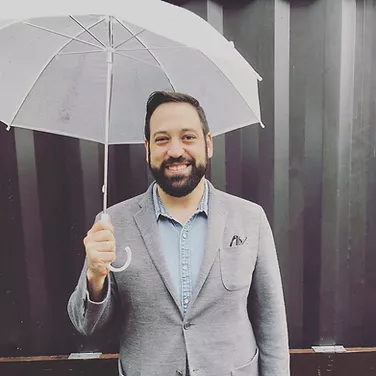
About Samuel Sattin:
He is the author of graphic novels Wolfwalkers, Bezkamp, and Legend, and recently partnered with Patrick Macias to write Crunchyroll’s Essential Anime: Fan Favorites, Memorable Masterpieces, and Cult Classics. Earlier this May, he and his team launched the Kickstarter for UNICO: AWAKENING, in coordination with Tezuka Productions Japan. He’s a friend of Deb’s too, which is super neat! You can find out more about him on his website, https://www.samuelsattin.com/.
57:00 So yeah, I kinda tripped over this question, absolutely my bad. Let me try to fix that. In Japan, Gurihiru tend to be illustrators and designers working on a variety of projects! They’re maybe most famous within Japan for their work on Marvel superheroes merchandising.
But most of their sequential comics work has tended to be originally published by Western publishers. Luckily Deb and Samuel catch my error, and point out just some of their (many) works, including (Eisner Award-winning!) Superman Smashes the Klan with writer Gene Luen Yang, published by DC Comics, Power Pack with writer Marc Sumerak, published by Marvel Comics, and Avatar: The Last Airbender, written by Bryan Konietzko, Gene Luen Yang, Michael Dante DiMartino and published by Dark Horse.
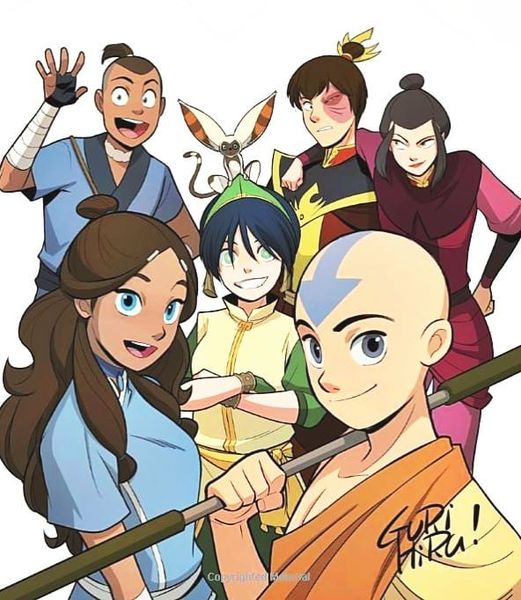
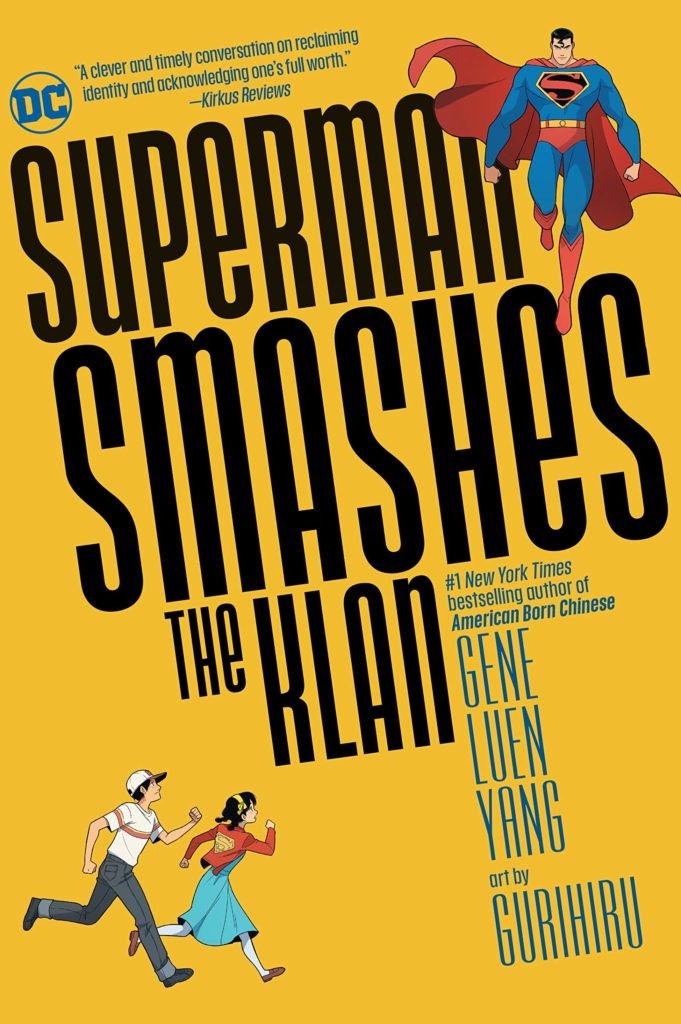
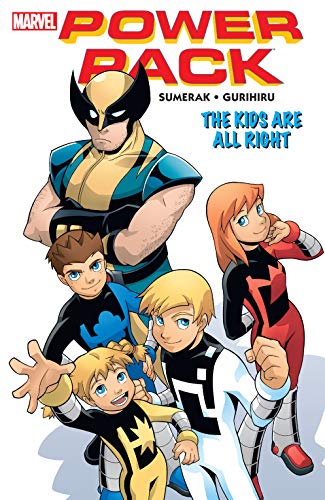
They’ve got a really extensive Wikipedia entry about Gurihiru, actually! Go check out all of their many, many comic book credits. Please forgive my slip-up.
Also as Sam mentioned, they are now working on a Japanese manga property in Japan, the spin-off manga Ultraman: Another Gene, which is coming later this year. Here’s the Twitter announcement from Tsurubaya Productions.
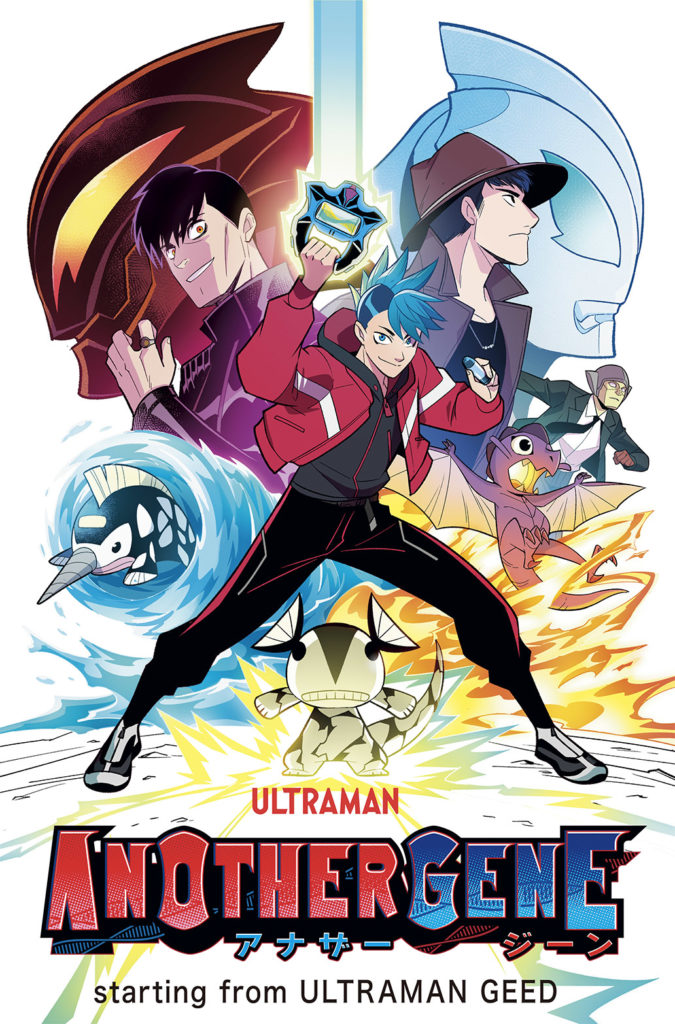
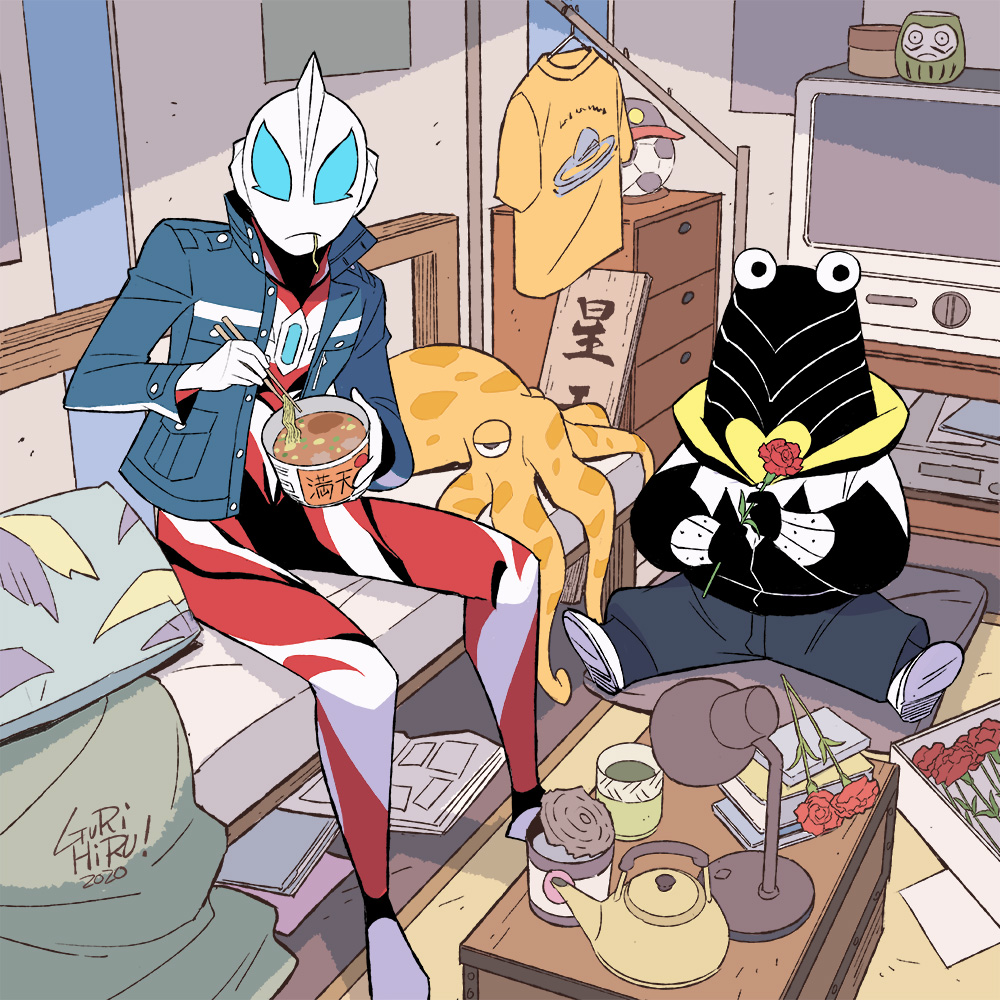
1:03:00 Poor Artax.
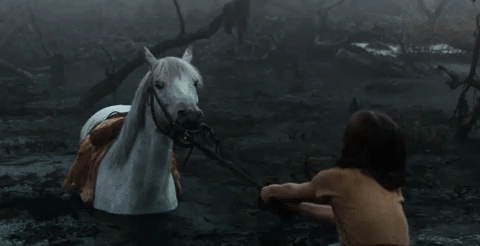
1:03:25 The Amazing World of Gumball is awesome.
1:06:50 As Sam mentions, there are some really, really unique items being added to the Unico Kickstarter, from beautiful prints to zines, to the picture book he mentions by Maddie Copp.
1:08:10 The Tezuka Moderno stuff really does look good.
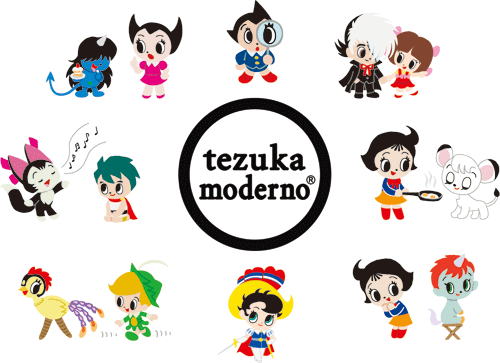
[Deb:] Christopher mentions an acronym, “SD” = “Super Deformed,” a term that refers to how characters can be adapted into smaller, sometimes cuter versions of their original character designs.
1:13:40 We bleeped out the company name. But it’s not hard to figure out…!
1:14:30 Hey, since we’re mentioning a lot about Unico, you can check out the amazing resource Tezuka in English to read their write-up of Unico and see more about it.
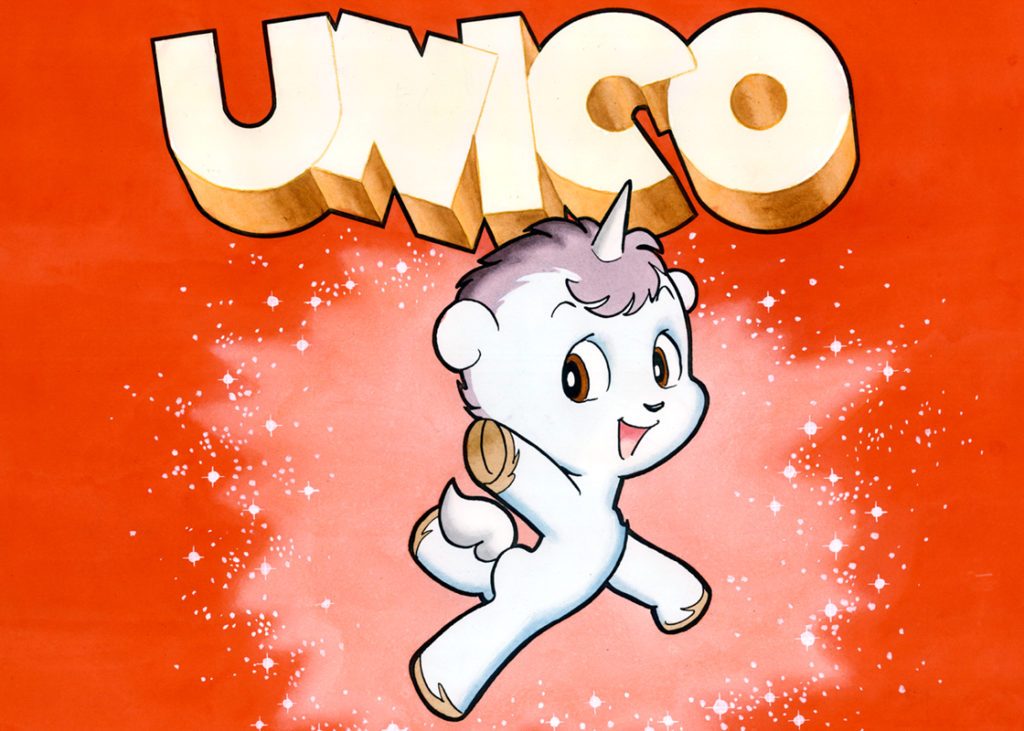
[Deb:] There’s also an entry for Unico at the official Tezuka Pro website too!
1:20:00 Look, things have been completely insane for the past little while. You could easily forget that there was a whole defense of assault weapons in Arkansas based around the worry of swarms of feral hogs.
1:22:45 MW is a very complicated Tezuka work that’s totally worth reading. Published by Vertical Inc./Kodansha.
[Deb:] So here’s Kodansha’s description of MW:
A secret U.S. chemical weapon called “MW” accidentally leaks and wipes out the population of a southern Japanese island. Though Michio Yuki survives, he emerges from the ordeal without a trace of conscience. MW is manga-god Osamu Tezuka’s controversial testament to the Machiavellian character and features his most direct engagement of themes such as transvestism and homoeroticism.
MW is a chilling picaresque of evil. Steering clear of the supernatural as well as the cuddly designs and slapstick humor that enliven many of Tezuka’s better-known works, MW explores a stark modern reality where neither drive nor secular justice seems to prevail. This willfully “anti-Tezuka” achievement from the master’s own pen nevertheless pulsates with his unique genius.
Kodansha
[Deb:] So you’d think that the only thing that a dark, complicated story like MW has in common with Unico is that both were created by Osamu Tezuka. And yes, that is mostly true! But if you think about it, Tezuka was deeply concerned with telling stories about power, corruption and redemption. The many dimensions to his creative curiosity is one reason why he’s called the “God of Manga.”
1:25:15 Haha, I was badly rambling at the end there, thank you David for cleaning that up.
As a special treat from Team Unico, they sent along some concept sketches by Gurihiru, as a little Mangasplaining exclusive:
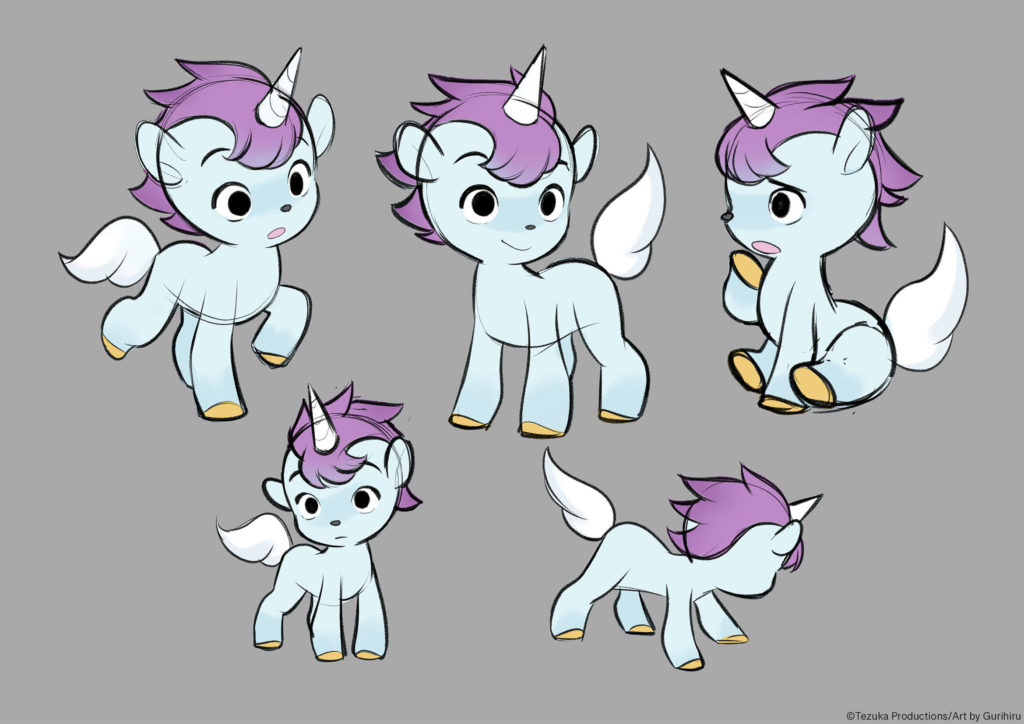
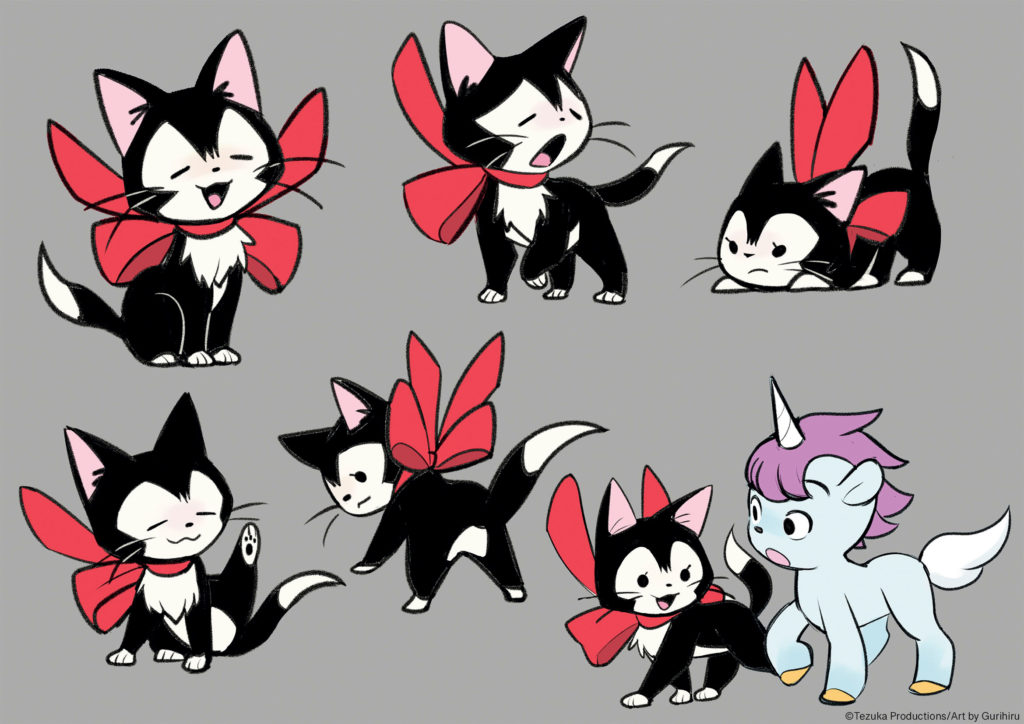
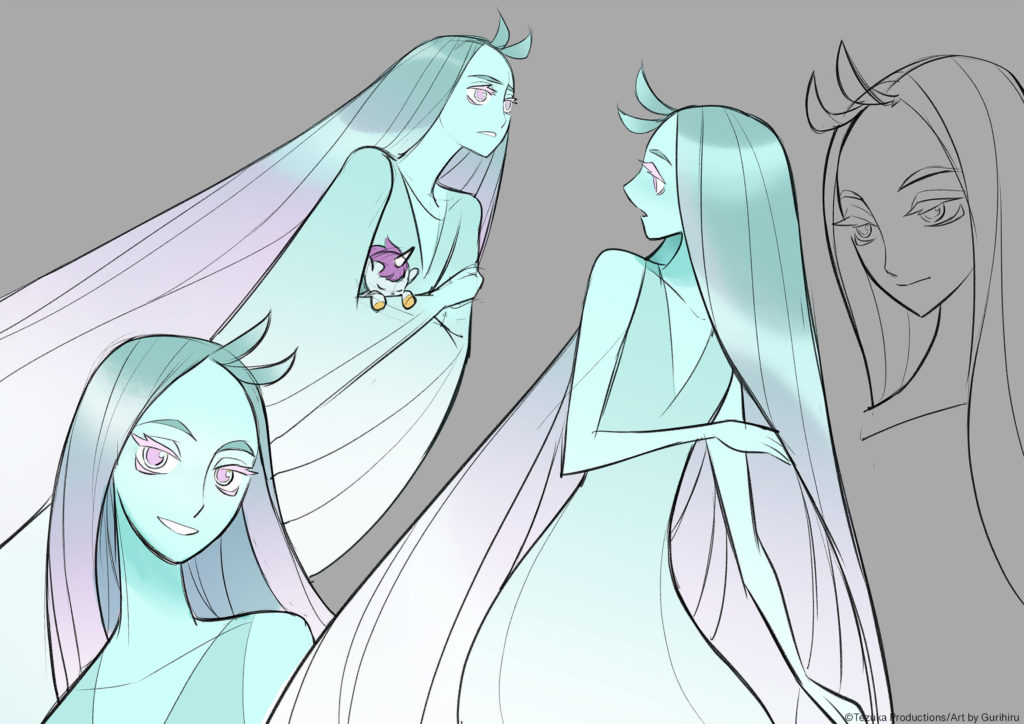
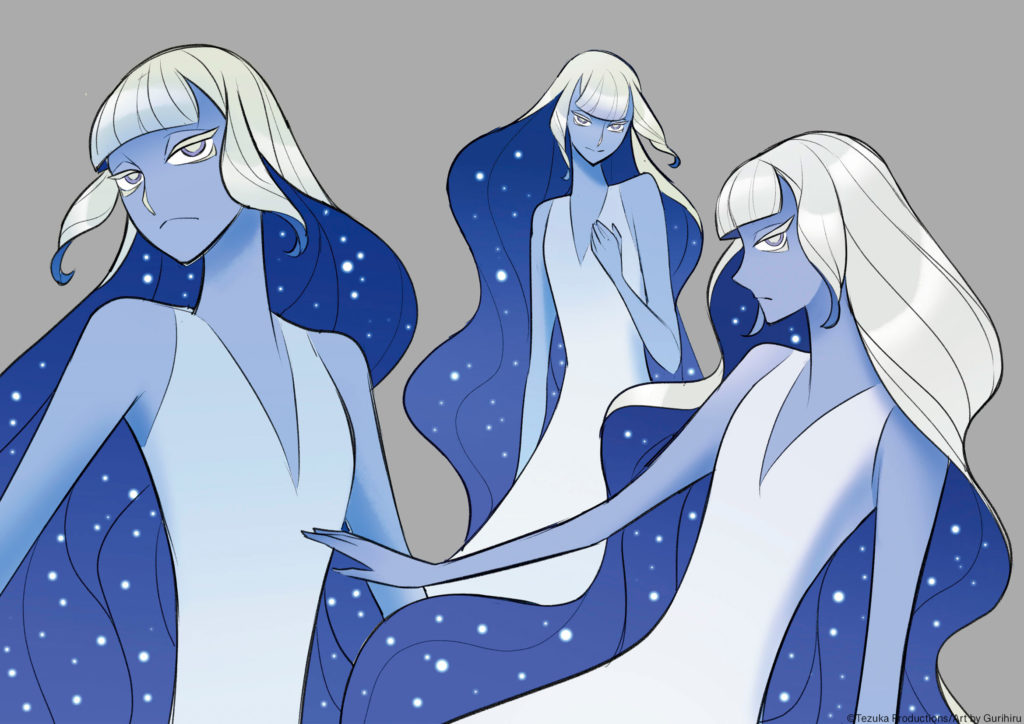
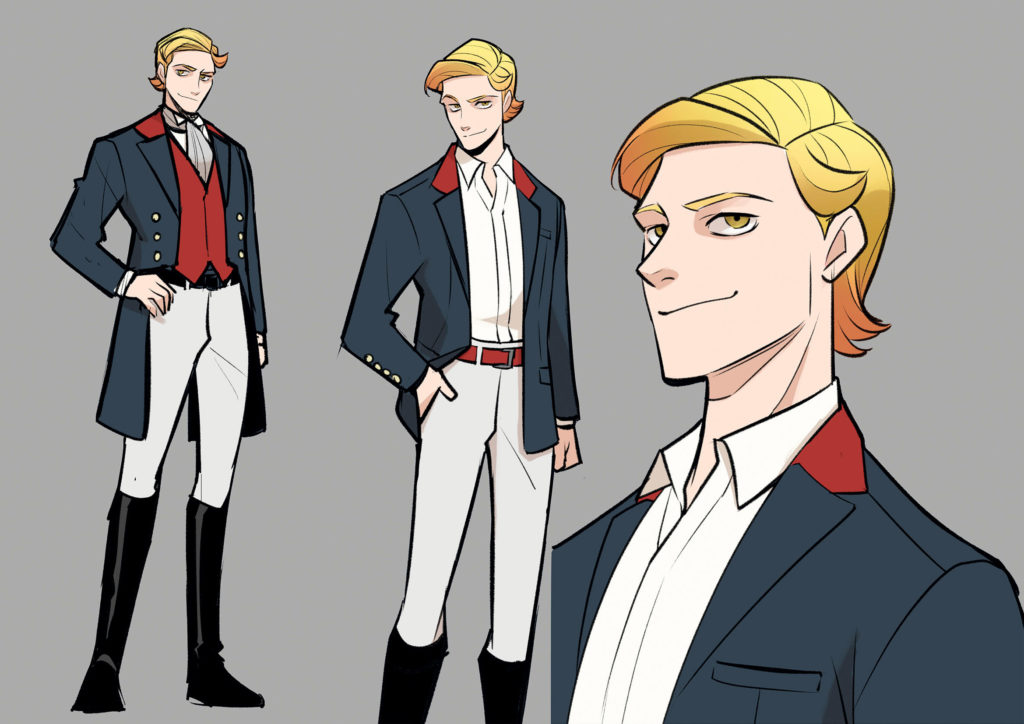
Also, here’s a look at some process sketches for Unico pages/illustrations by Gurihiru:
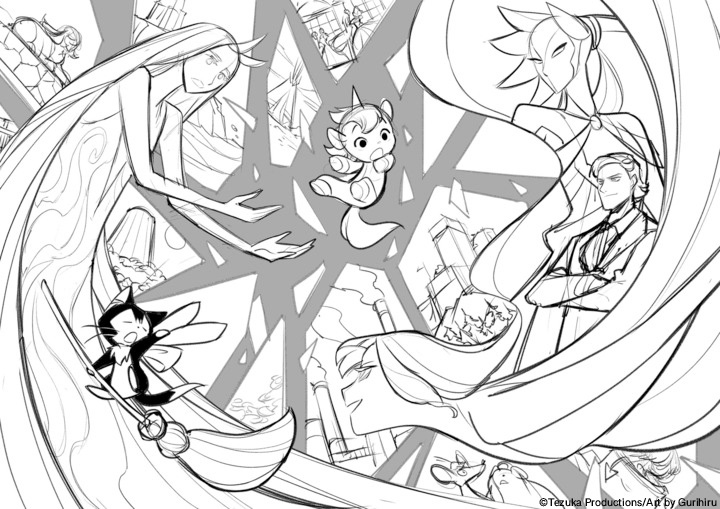
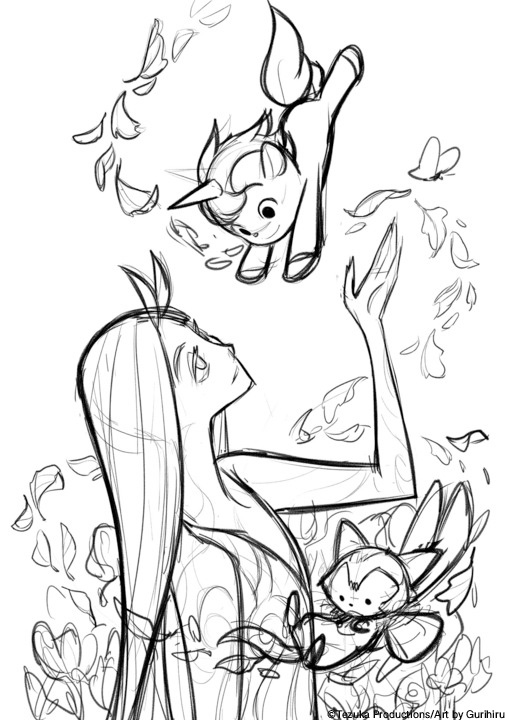
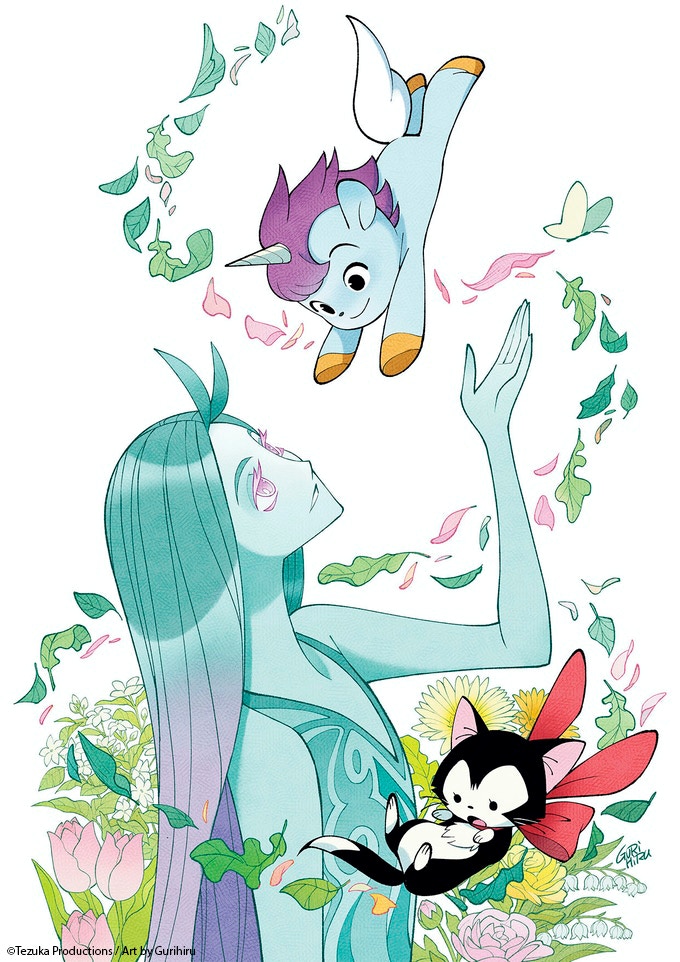
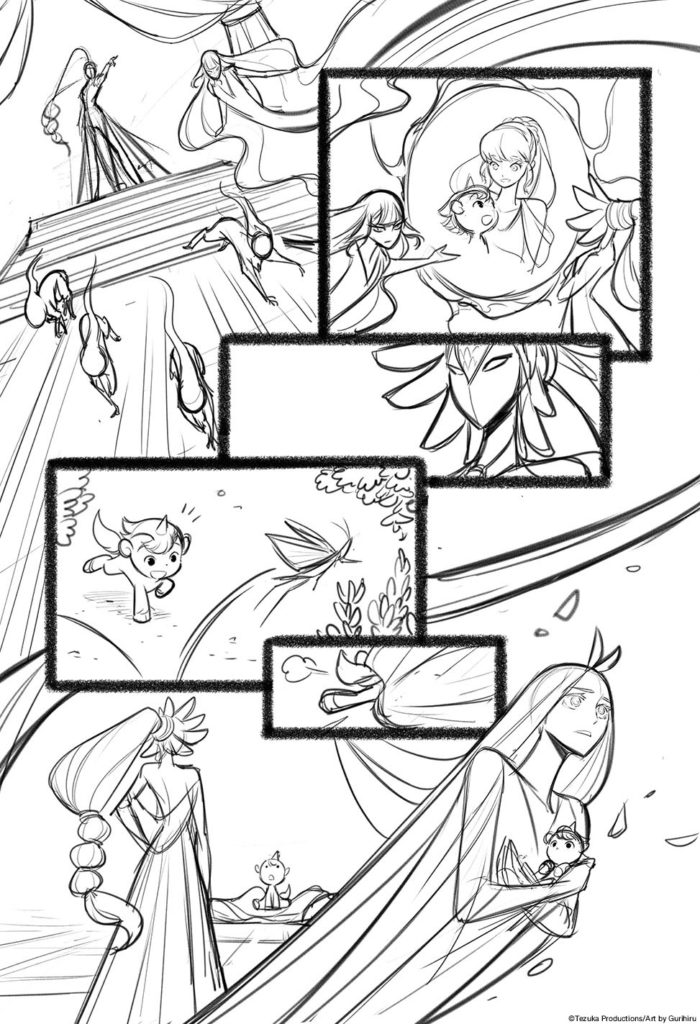
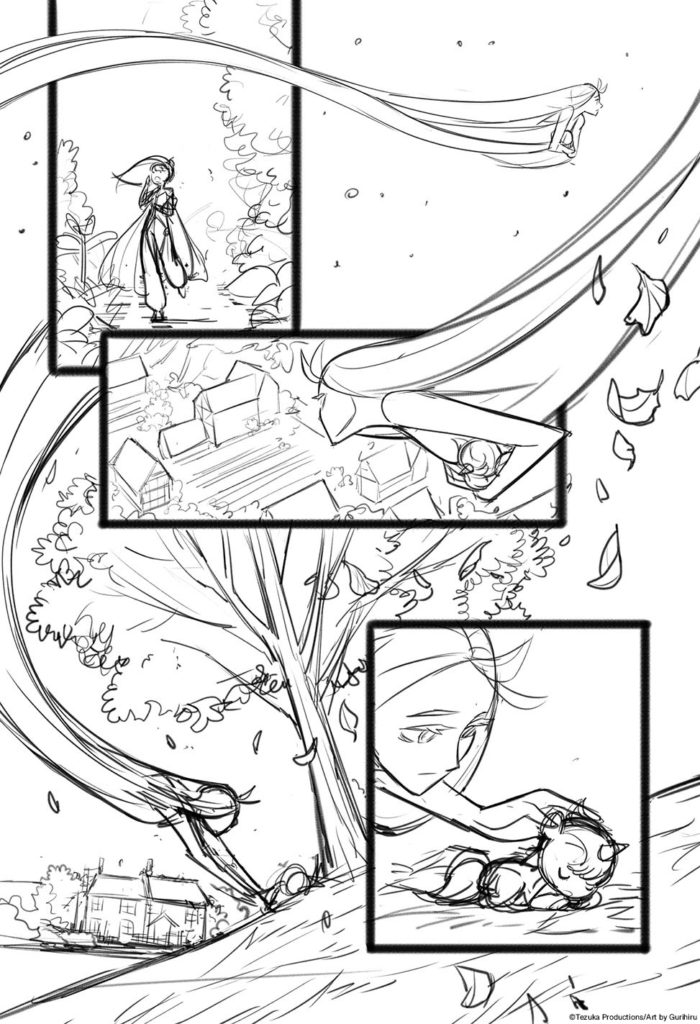
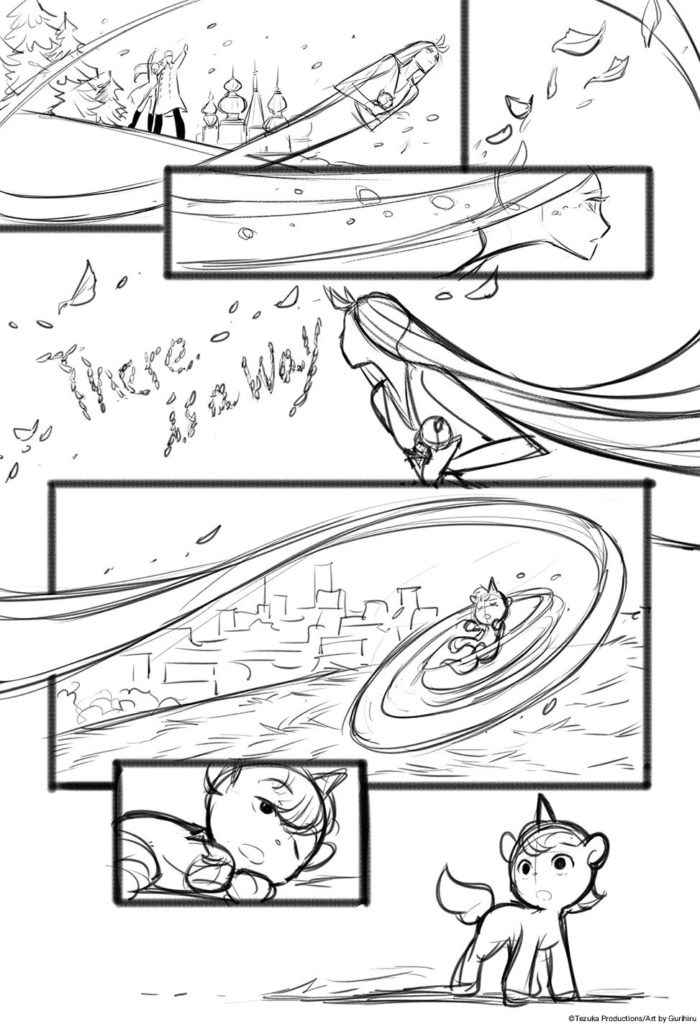
And thanks again to Sam for the interview! That Kickstarter link again is: https://www.kickstarter.com/projects/1803389958/unico-awakening-manga-by-gurihiru-and-samuel-sattin
1:25:25 BREAK #2!
Now it’s time for SHOUT-OUTS!
David shouts-out the work of Becky Cloonan, which he was reminded of during our brief visit to Dick Fight Island a couple weeks back. The slightly-rough, muscly, lean dudes of Dick Fight Island gave us the same sort of Becky Cloonan dude vibes as the station manager from allll the way back in our Wave, Listen To Me episode.
Here’s her Instagram and her Big Cartel shop!

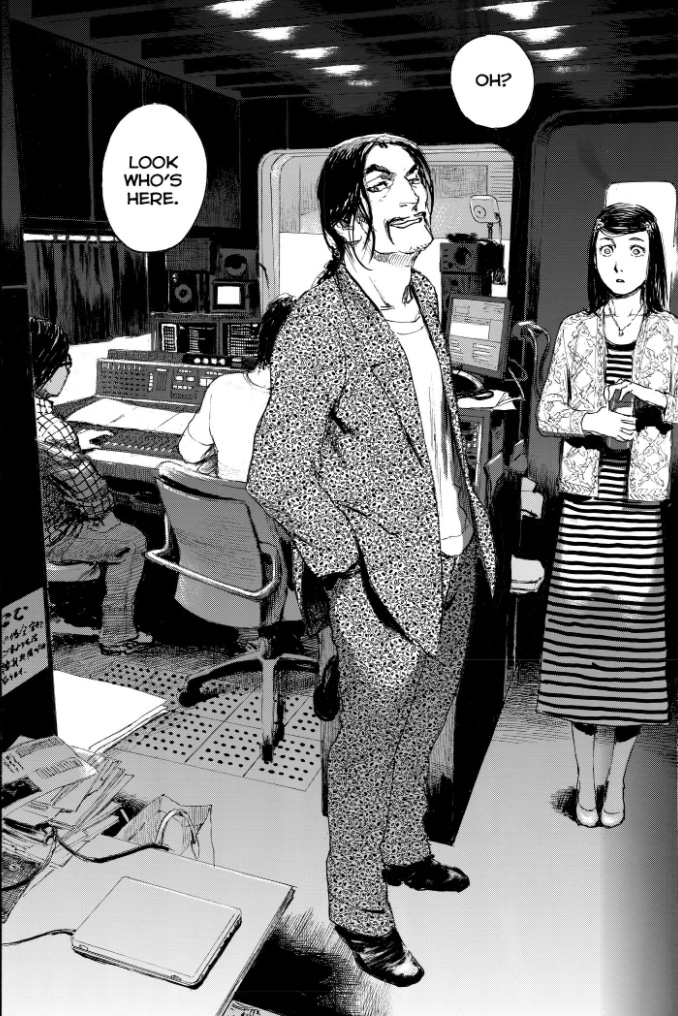
Deb and David then invent the new acronym MIALF, which is borderline-saucier than anything else we talk about in this episode!
Chip shouts out the comedy special Rothaniel, by comedian Jerrod Carmichael. Here’s a clip from the special. It’s a lot saucier than the rest of this episode, but it looks great!
David also really digs Carmichael’s work, and tells you to go check out more of his work, so here’s a link to his Wikipedia! https://en.wikipedia.org/wiki/Jerrod_Carmichael
Deb shouts out the anime Ranking of Kings, which I’ve heard so much about and wanna watch.
[Deb:] It’s currently streaming on Crunchyroll, and it’s one of those series that you should watch without knowing too much about what the story is about, because the surprising twists will just be that much more satisfying and fun to discover. Trust me, it’s much more than the usual fairy tale fable it seems to be at first.
Christopher shouts out MangasplainingExtra.com, where he and Deb and Andrew have been serializing manga and creating bonus articles for YOU to read! Just in time for this episode to go live, we actually created this landing page (which will continue to be updated) which links to all of the manga we’ve serialized so far, both free and subscriber-only.
Also here’s that food article that Deb wrote we mentioned too:
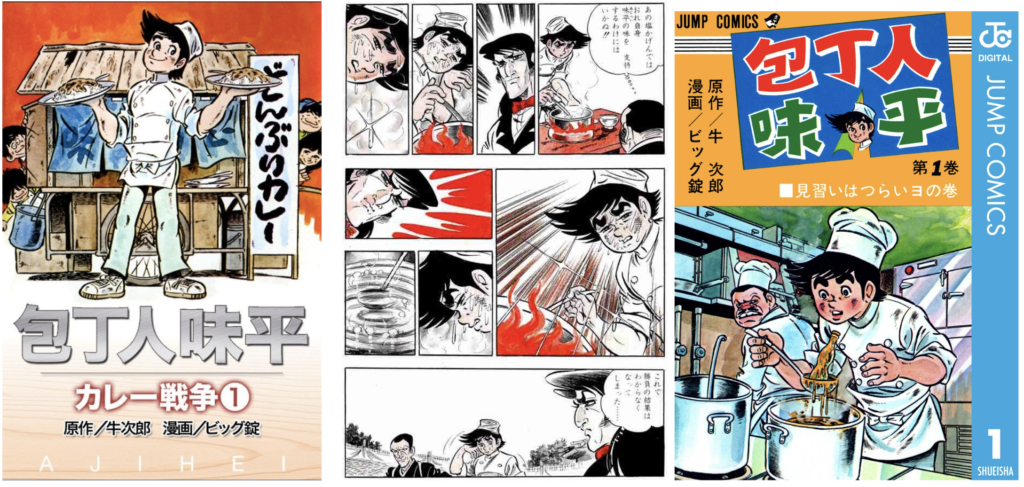
And that wraps up this week’s episode of Mangasplaining! We hope you enjoyed it, it was a long one! 😀
Please support your local comic and manga specialty shop when purchasing these books, and you can find one near you at comicshoplocator.com. You can also check your local library for print and digital lending options, they have TONS of manga! Also, check us out at MangasplainingExtra.com, we’re doing cool stuff over there, like that Kaz comic up top. Finally, thanks to D.A.D.S. for their musical accompaniment this episode.
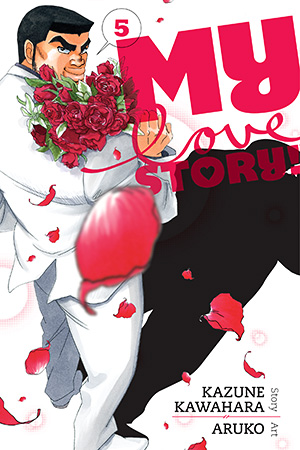
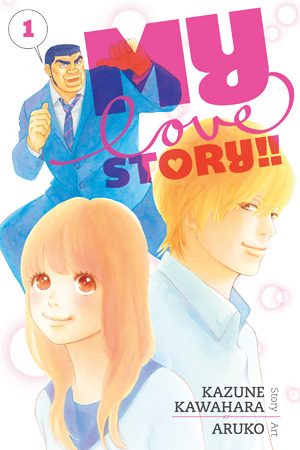
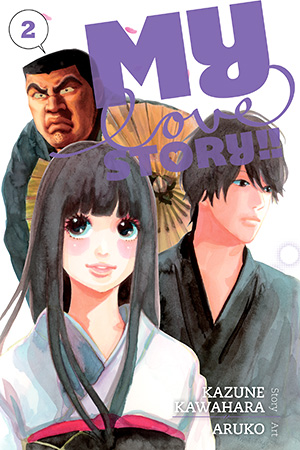
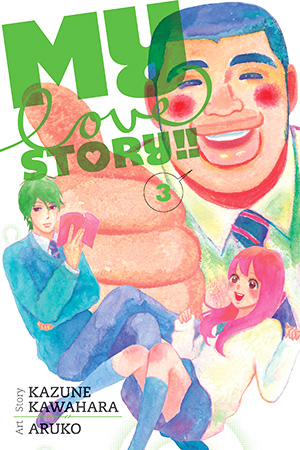
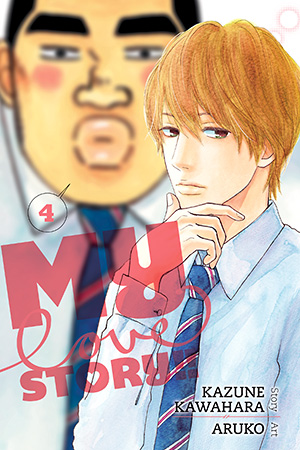
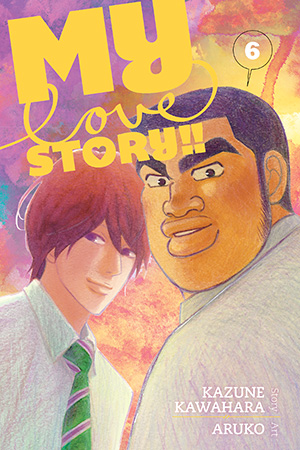
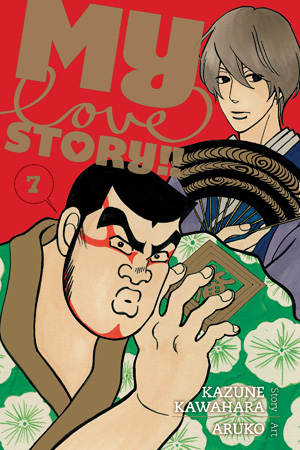
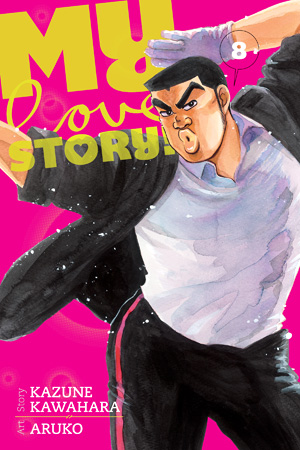
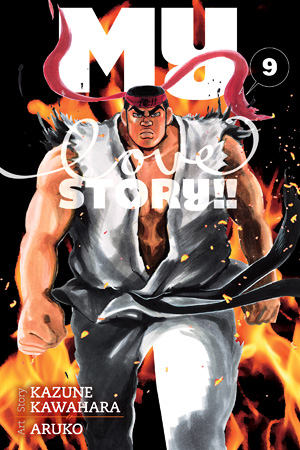
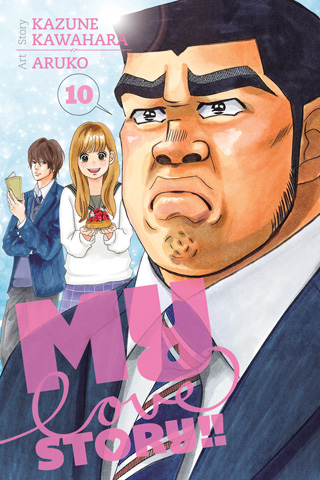
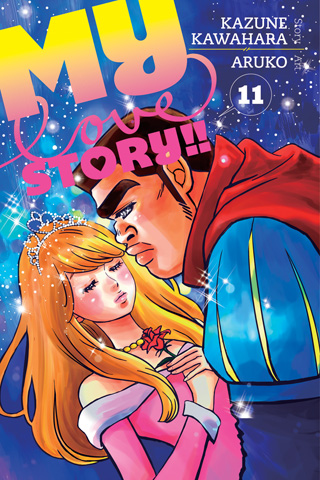
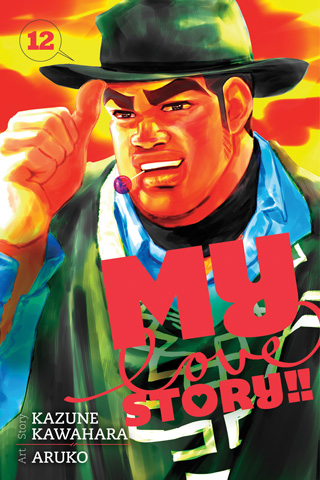
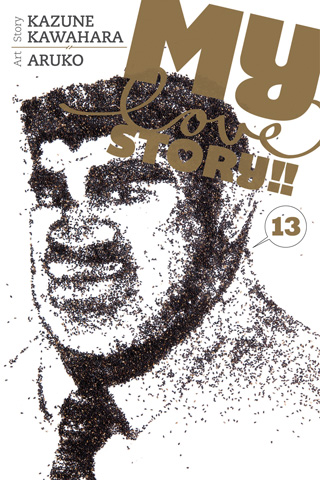

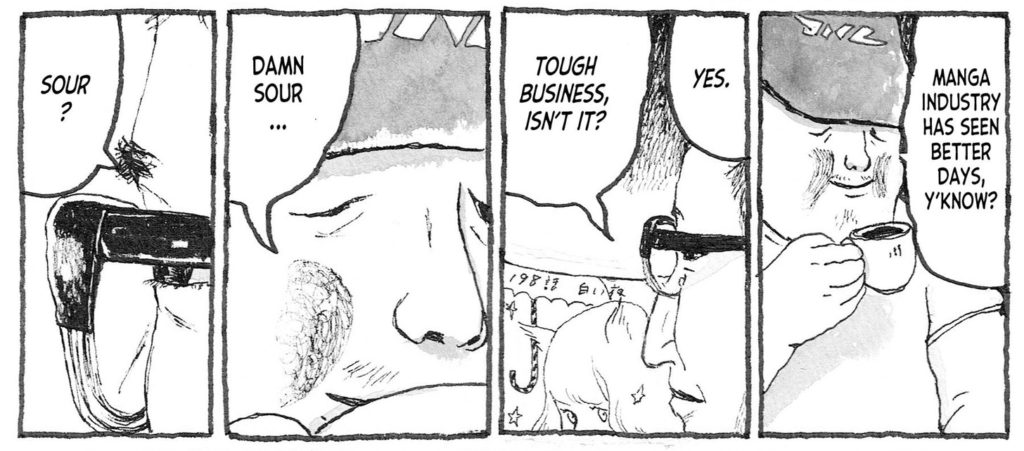
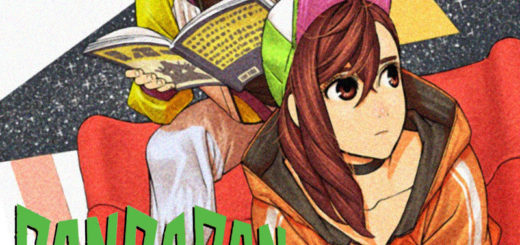
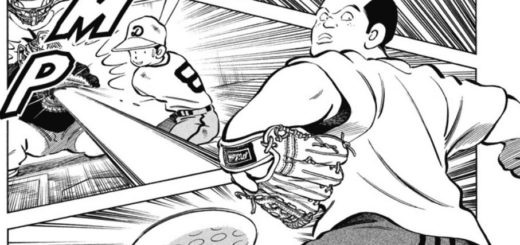
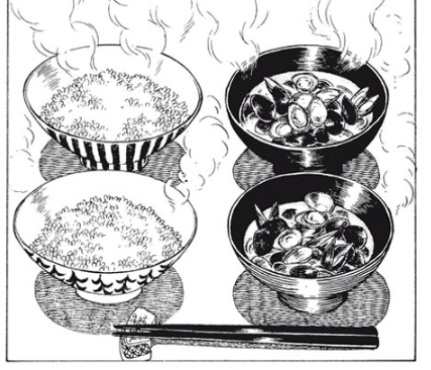
This episode ought to be taught to people as “here is how you can react to someone not liking something you like without being a toxic asshole about.”
it.”
Goddammnit
🙂
So much of this was just me both agreeing with Chip AND actively disagreeing completely! Yes this is all ridiculous and the artwork isn’t the strongest but it’s the CINDERELLA PLAY CHIP!!! THE PLAY IS THE THING! (or smth)
I’ve slowly been getting my Cis-male friends into Shojo & BL lately but it has been like pulling teeth to get them to overcome some of their internalised prejudices from years of ShonenJump Indoctrination… weirdly the biggest success WAS Fruits Basket but I had to ply them with Laura Bailey (they’re a bunch of DnD Nerds) and “No no just get through the 5 episodes and TRUST ME!”
I’ve also had weird success with “Snow White With The Red Hair” which surprised me but I guess I have picked my friends well to like independent female protagonists, Ye Olde STEM and Unintentional Queer Coding! Although maybe, again, NOT a book for Chip Zdarasky…
I’m still gonna plug “A Sign Of Affection” as a Shojo you might be able to get a lot out of!!! ESPECIALLY the lettering, DEAR GOD the use of lettering to enhance story telling I need more people to talk about it!!!! Now that Chip is able to find place to purchase physical books again, a good time? Maybe? Since I think the lettering in the physical is better than in the digital/simulpub. It does have a lot of the Shojo Tropes but they feel EARNED here, so whilst a Shojo Fan can go “Oh wow this is a good take on the tropes I love!” a newbie can just accept them as they are without feeling dissonance.
But yes, I also agree: This episode is a great lesson in now to have a group discussion where one of you doesn’t like the thing everyone else does, and nobody is an arsehole about it! Because sometimes something just isn’t designed for you in mind, and that’s okay! And it’s okay for people to not love what you love, because if everyone did then life would be boring. And then you can’t have weirdly intense arguements about pointless stuff at a Hotel Bar half in-half out of cosplay! And those are some of the best convention moments, LBH. *flashes back to the ethics of Janeway’s holographic boyfriend debate of 2018*
I admit, this title wasn’t even on my radar till Deb recommended it, as while 80% of the manga I read is shoujo (or josei… more on that somewhere else in this mini essay 😛 ), I’ve pretty much lost any interest in high school rom-com shoujo unless it’s highly recommended, or a mangaka I love. I remember TokyoPop (then, err, Mixx)’s first non fantasy shoujo release, Peach Girl, coming out when I was 17 or 18 and I just ate that shit up. It was amazing to me, to read a non-genre, current shoujo title in English. But I recently went back to my old copies of it and, meh, I won’t be re-reading (and yeah, some of this simply is that I’m now a 40 year old guy—but I still think two of their other early shoujo releases, ParadiseKiss and Mars are wonderful.) But I found volume one of this pretty OK, mostly due to how funny, non-mean spirited (maybe too, err, nice spirited as you all mentioned) and self referential. I’m in no rush, but will probably get around to the other volumes.
Y’know, I never really thought about it before, but it’s true that shoujo manga in general doesn’t bother with detailed backgrounds. I guess because I read so much, I just accept that—and I admit this is an *extreme* example. I did at some point have a pointless Twitter war (aren’t they all) with someone who said he preferred shonen purely because the art was better. Mentioning specifically Moto Hagio, he complained how shoujo mangaka were so “lazy” they didn’t even bother with backgrounds (which I don’t really think is true of Hagio…) So, I guess this is a sticking point for some.
I *absolutely* don’t think that it’s more common in shoujo than in shonen to have works with a separate writer and artist. In fact I always thought that it’s always been more common in shonen and seinen, personally… So maybe this is just a point of perspective. But I especially think of how many classic shonen works have two creators. Think of classics like Lone Wolf and Cub. All of the Ryoichi Ikegami collaborations that seemed to be everywhere when I got into manga. I had heard it *used* to be partly because women had a tougher time breaking into manga so basically, when starting, had to just do it all on their own, but I bet that’s an apocryphal assumption and wouldn’t hold much water now, but certainly I can think of more major classic shonen titles with shared credits than shoujo (CLAMP aside…)
However, when suggesting similar high school, lighter, romantic manga with a BL slant, I was shocked that no one mentioned KAITO’s Blue Flag, which is what this immediately made me think of—in fact the basic plot is remarkably the same, even that “twist” (which is probably one reason it wasn’t even slightly a twist for me). But wait—Blue Flag is *shonen*. It was in fact a digital release by Shonen Jump of all places. Which makes the heavy discussion in this week’s episode about how very shoujo My Love Mix is, *fascinating*. Would someone who doesn’t know the shoujo teen romance tropes and so finds Love Mix hard to get into, find Blue Flag *easier* to get into? I’m not really sure (though I admit I liked Blue Flag more). If Chip saw Blue Flag would he even assume it is super mainstream shonen and not shoujo? If one really knows the visual tropes of shoujo, the art of Blue Flag definitely is more clearly shonen. But only slightly (hey, more backgrounds!) And the Japanese covers sure don’t scream shonen. Do these categories mean much at all anymore?
Of course there’s always been some cross over. I’m thrilled you’re doing Mitsuru Adachi’s Cross Game—which I love, as I do all of his titles I’ve encountered (and I don’t even like baseball). I’m a bit obsessed with one of his first hits after his breakout Nine, Hiatari Ryoko! which ran for several years starting in 1979 in Shoujo Comic. Aside from focusing more on a female lead, he barely changes anything about his formula for this series, despite being shoujo, which was a huge hit, creating a 50 episode tv series, movie, and tv drama. And yet it ran in the most experimental, Year 24 heavy manga magazine, alongside Hagio’s Star Red and Takemiya’s decadent masterpiece, Kaze to Ki no Uta! And right around the same time, Gekkan Manga Shonen which had had a massive hit with Tera E—which they went out of their way to hire Keiko Takemiya to do and she barely changed a lick of her super shoujo style for the shonen audience—actually reformatted as the subtly titled Duo magazine, one of the first attempts at a unisex (would we now say non binary?) manga magazine, where she published her Ryu Mitsuse collaboration Andromeda Stories. That was 40+ years back (though I believe Duo only lasted a few more years…)
So I since I’m obsessed with how these category terms are used, I gather for this episode when shoujo tropes are mentioned, for the most part we specifically mean high school romance shoujo tropes? Cuz obviously a great swath of shoujo manga doesn’t have these plot elements. I also found it interesting that at the opening, Deb said this was shoujo with a bit of a different genre—by which she meant BL I assume. But isn’t BL *always* shoujo or josei technically (manga drawn primarily by women, aimed primarily to female readers)? The same way shoujo horror manga is still shoujo? I mean we just finally got a release of Marimo Ragawa’s all time classic 90s BL, New York New York (which I seem to mention in all these endless posts) and it’s from ultra shoujo magazine Hana to Yume.
In my continued research for a project/interview series of readers of 1970s shoujo manga—when virtually all reading was still done in serialized magazines, with the effect that often titles and genres got associated first with a magazine rather than with a mangaka, something that I think now only really applies maybe to Shonen Jump and even that’s changing—I’ve been helped a lot with shoujo manga scholar Moyo Usuki (her pen name when publishing on manga) who has currently helped publish over a dozen gorgeous classic shoujo mangaka art/interview books as well as reprints. She’s talked numerous times with women like Moto Hagio and Keiko Takmemiya as well as more recent names—so in other words I tend to trust her take on this. She always finds my questions of categorization a bit bewildering, saying that “josei” is still a classification for manga that isn;’t commonly used (as opposed to the 1980s Ladies Comic which tends to mean straight, female pornography). Shoujo is still often used by adult women readers. So all of this stuff is very much on my mind.
I remember what seems like YEARS back when you did your great Paradise Kiss podcast, there was discussion about whether it was shoujo or josei, with I believe you all deciding it was josei, which is how English Wikipedia classifies it. Which I strongly disagreed with—but mostly because if we’re just going by classifications (where it was published), Shodensha’s fashion magazine Zipper was classified on their own website as shoujo, targeting 13-18 year old girls. Which, pedant that I am, makes it absolutely shoujo. (Shodensha does have a josei targeted all manga magazine, Feel Young, which is incidentally always one of the more interesting, even “edgy” of the mainstream magazines aimed at that demo—Helter Skelter and Happy Mania were two of its earlier titles, and My Androgynous Boyfriend is running there now. Along with Flowers, it’s the manga monthly I try to pick up as often as possible, just to check out.)
And I’ve rambled on this subject that I’m sure most people couldn’t care less about, long enough. But I will say that I am very excited that next week you are covering a favourite of mine, All My Darling Daughters. I feel like I need to point out the odd genre categorizing of this… Because of course it seems about as josei as josei can get, no? It was serialized in Melody magazine, which has serialized so many other *so* josei great titles by truly great mangaka like Keiko Nishi, Maniko Narita, Yasuko Aoike and titles like Himitsu—Top Secret and Yamagishi’s own Ooku: The Inner Chamber. Anyone who thinks they know anything about what is obviously josei and not shoujo could point out any of these works. And yet as Moyo Uzuki points out, and others in a recent Twitter discussion have, Hakusensha have made a POINT of marketing Melody as a shoujo magazine. So, by definitions of how the magazine it’s from is classified, All My Darling Daughters is shoujo, not josei…
Oh, and Jerrod Carmichael’s special *is* great. 😀
Oh and totally got distracted in my shoujo rant–but also wanted to thank you for featuring Samuel Sattin and the new Unico. I had JUST first heard about it a few days back, and was intrigued (and am even more intrigued now that I find out his Tezuka love is MW, a manga I have an extreme love/hate relationship with but is so endlessly fascinating). Like a lot of 80s kids, I have fond memories of the two anime movie versions in their bad 80s dub, which I definitely associate with that era of 80s family entertainment which always had nightmare fuel, as well as melancholy elements (and so totally associate it with things like Last Unicorn–still a fave–Return to Oz, and yes, Neverending Story…) And did buy the colour English edition from about five years back of the manga (though I understand it’s very hard to get now). Also the whole connection between Tezuka and Sanrio, who he created Unico for, is kinda fascinating. So will definitely check it out–love the art examples here.
This episode had everything, but I Chip disliking the manga but still being able to engage in a critical conversation about it was perhaps my favorite. I think Erica’s comment at the top summarizes it the best.
Interesting that you should start off the show notes with the genre stats, because I find recently (up to this episode, at least), that the non-seinen episodes have discussions centering on genre-defining tropes. Not sure if this is a knock-on effect of trying to mangasplain to Chip, or because those genres have been underrepresented throughout. I remember the Dandadan episode focused heavily on shonen tropes as away to explicate the title, and, perhaps, justify its shortcomings. Even if something relies on tropes, they can still be used well or poorly, and it seemed like the tropes overloading My Love Mix Up weren’t the problem for Chip but the execution of said tropes.
And speaking of tropes, i personally dislike the tropes ingrained in high-school set fiction, Japanese or Western.A lot of them ring hollow. Whether “Saved by the Bell” or “Beverly Hills 90210,” nothing about those shows felt even remotely close to reality I was experiencing in high school. (Interestingly enough, I thought MTV’s “My So-Called Life” did an excellent job of capturing the awkward cadence of high schoolers having trouble expressing themselves adequately.) I think Chip’s problems with the high school setting were less cultural and more just the narrative surreality (absurdity?) of it.
Anyway, I’m glad you’re all never hesitant to wade into the waters of disagreement whenever something about a manga doesn’t work for you.